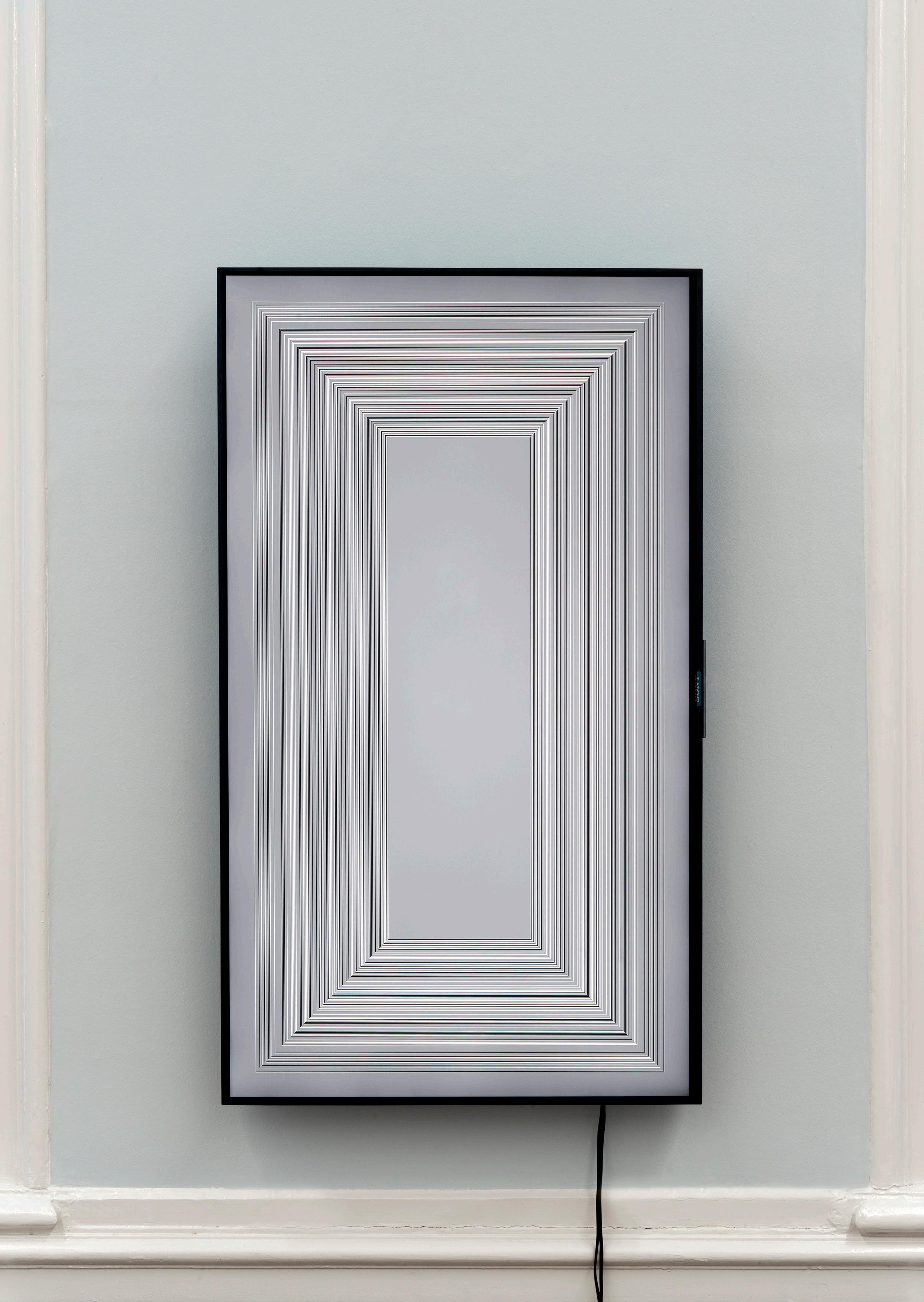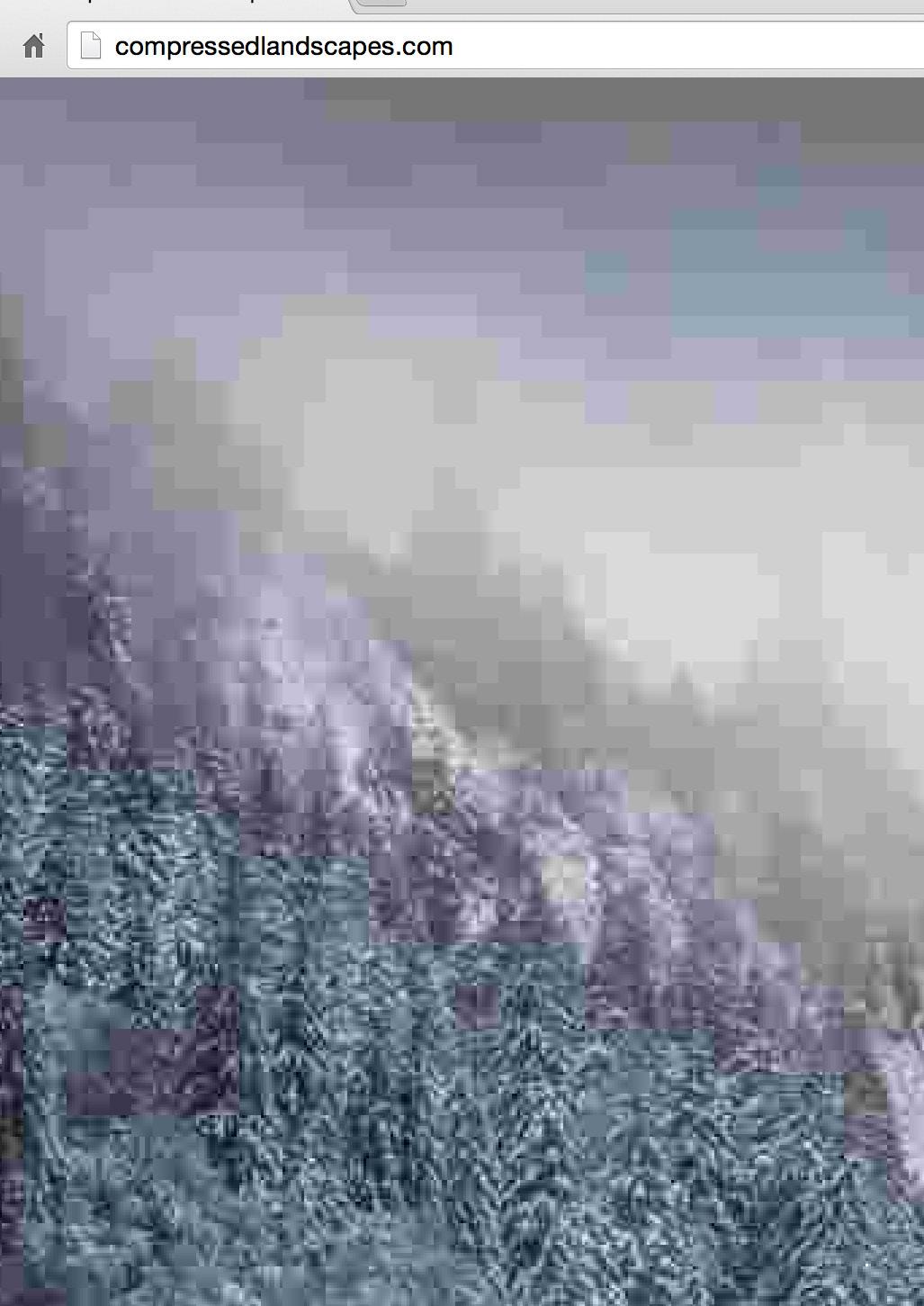
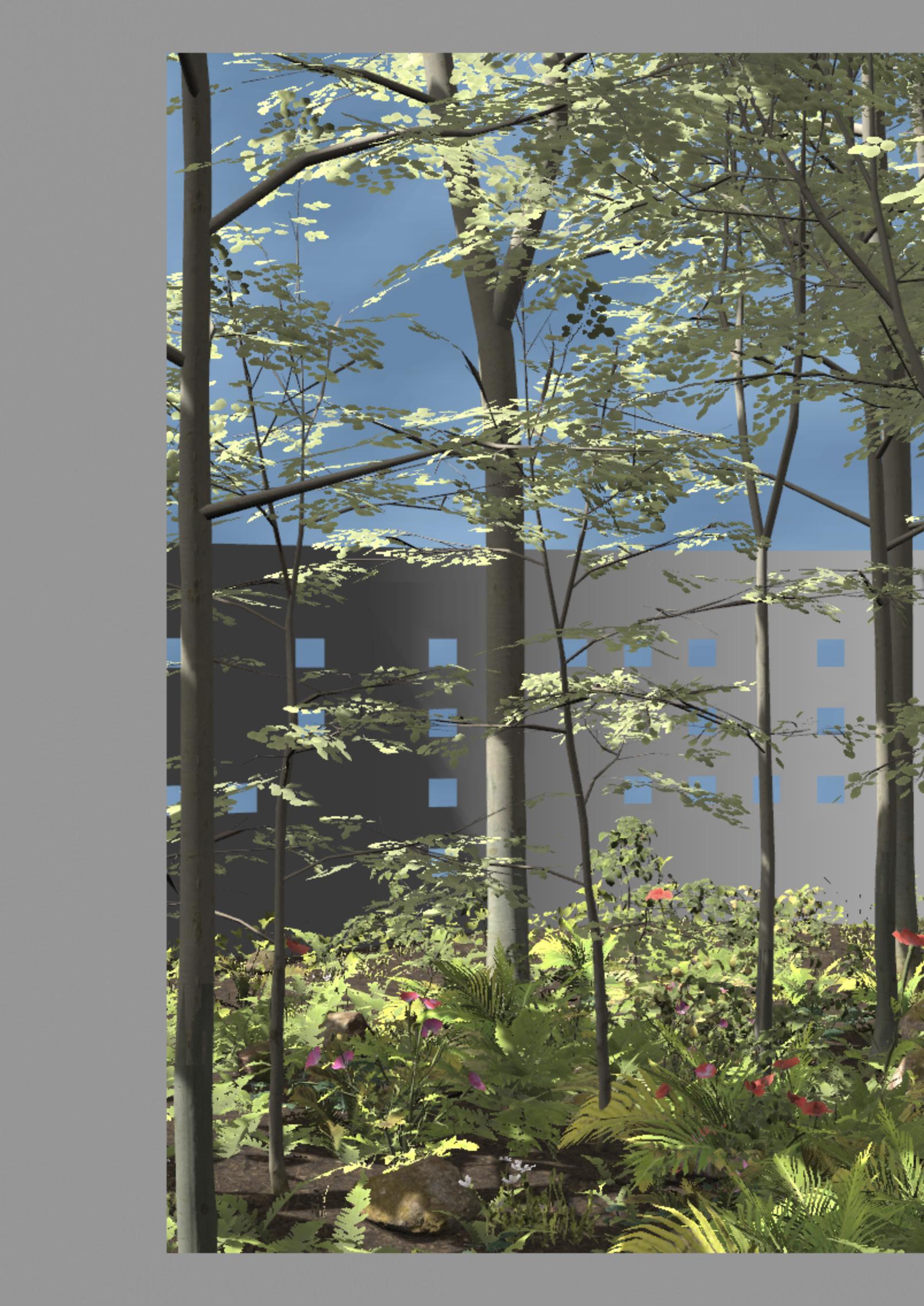



Introduction
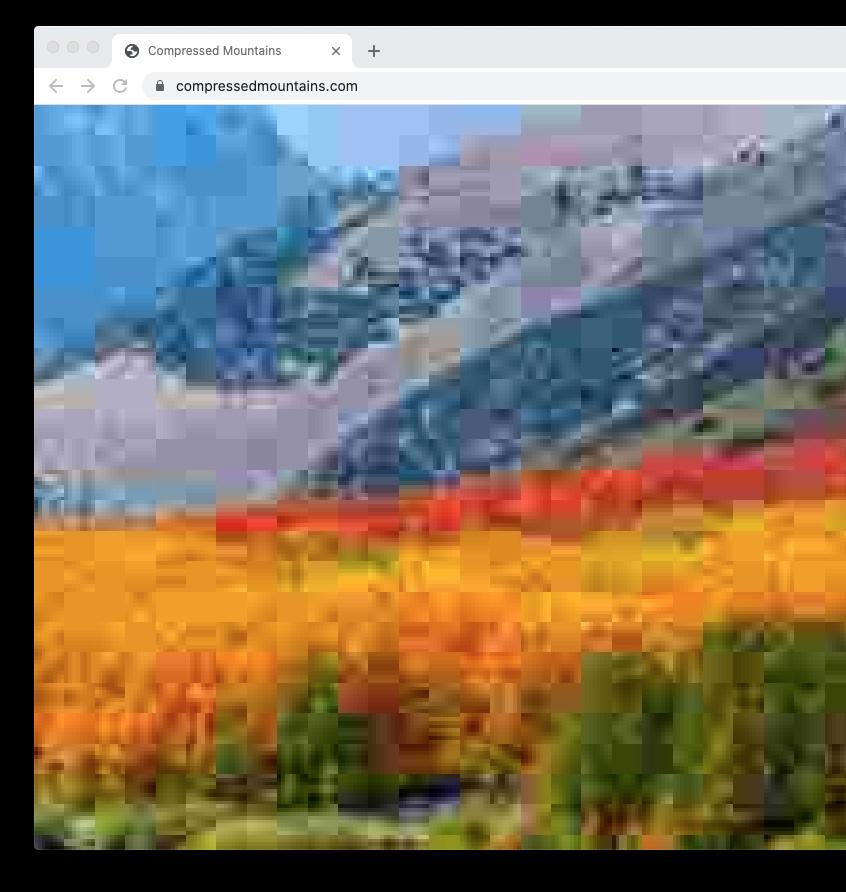
Compressed Mountains, 2016 HTML, Javascript, CSS, flickr API website
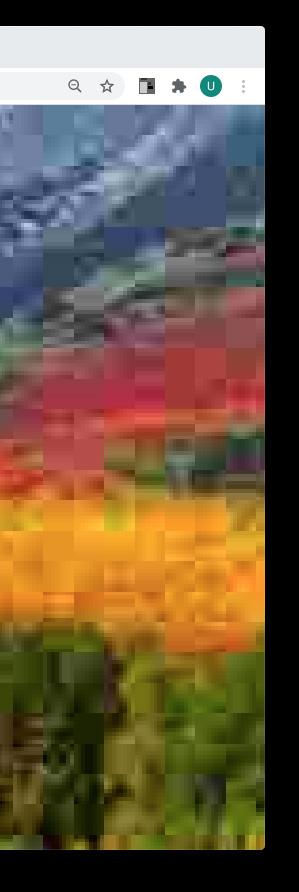
Jan Robert Leegte (born 1973, The Netherlands) is one of the first Dutch artists to work on and for the Internet since the 1990s. In 2002, he shifted his main focus to implementing digital materials in the context of the physical gallery space, aiming to bridge the online art world with the gallery art world, making prints, sculpture, installations, drawings, and projections, connecting to historical movements like land art, minimalism, performance art, and conceptualism.
As an artist Leegte explores the position of the new materials put forward by the (networked) computer. Photoshop selection marquees, scrollbars, Google Maps, code, and software are dissected to understand their ontological nature.
Leegte lives and works in Amsterdam. His work has been exhibited internationally (Whitechapel Gallery, Stedelijk Museum Amsterdam, ZKM Karlsruhe). He is currently represented by Upstream Gallery Amsterdam.
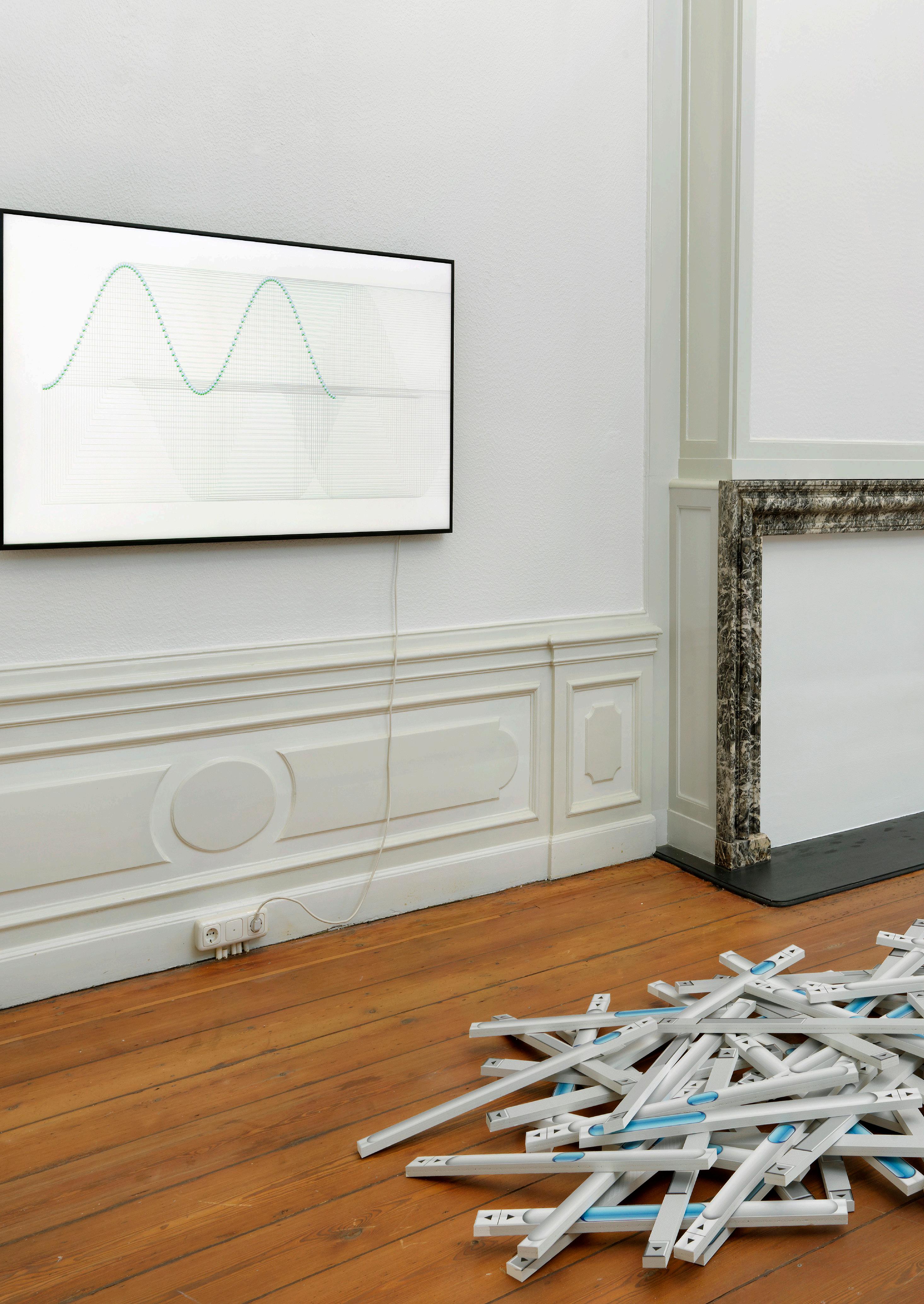
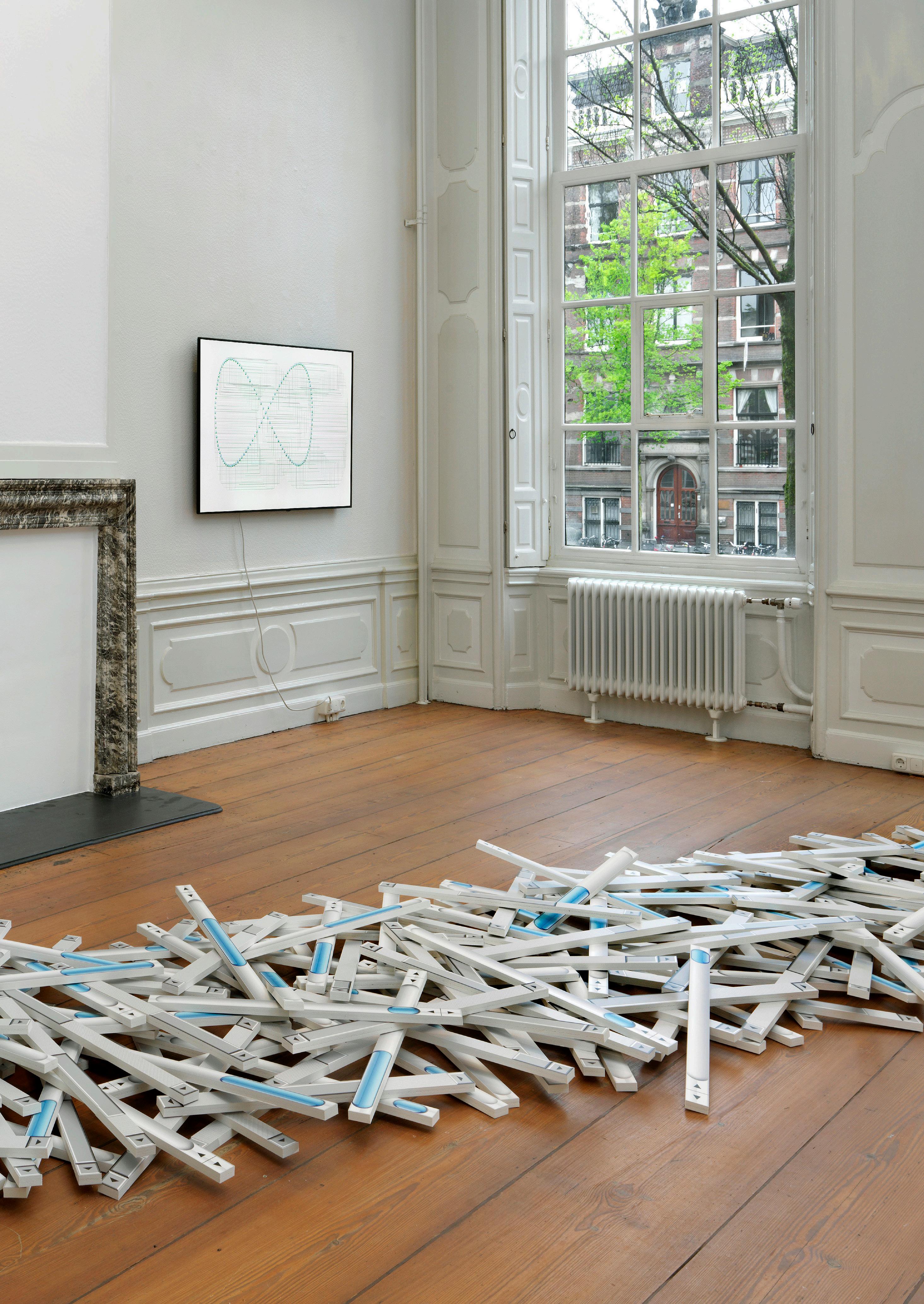
No Content - Contemplations on Software (2023) (solo) Exhibition installation view at Upstream Gallery
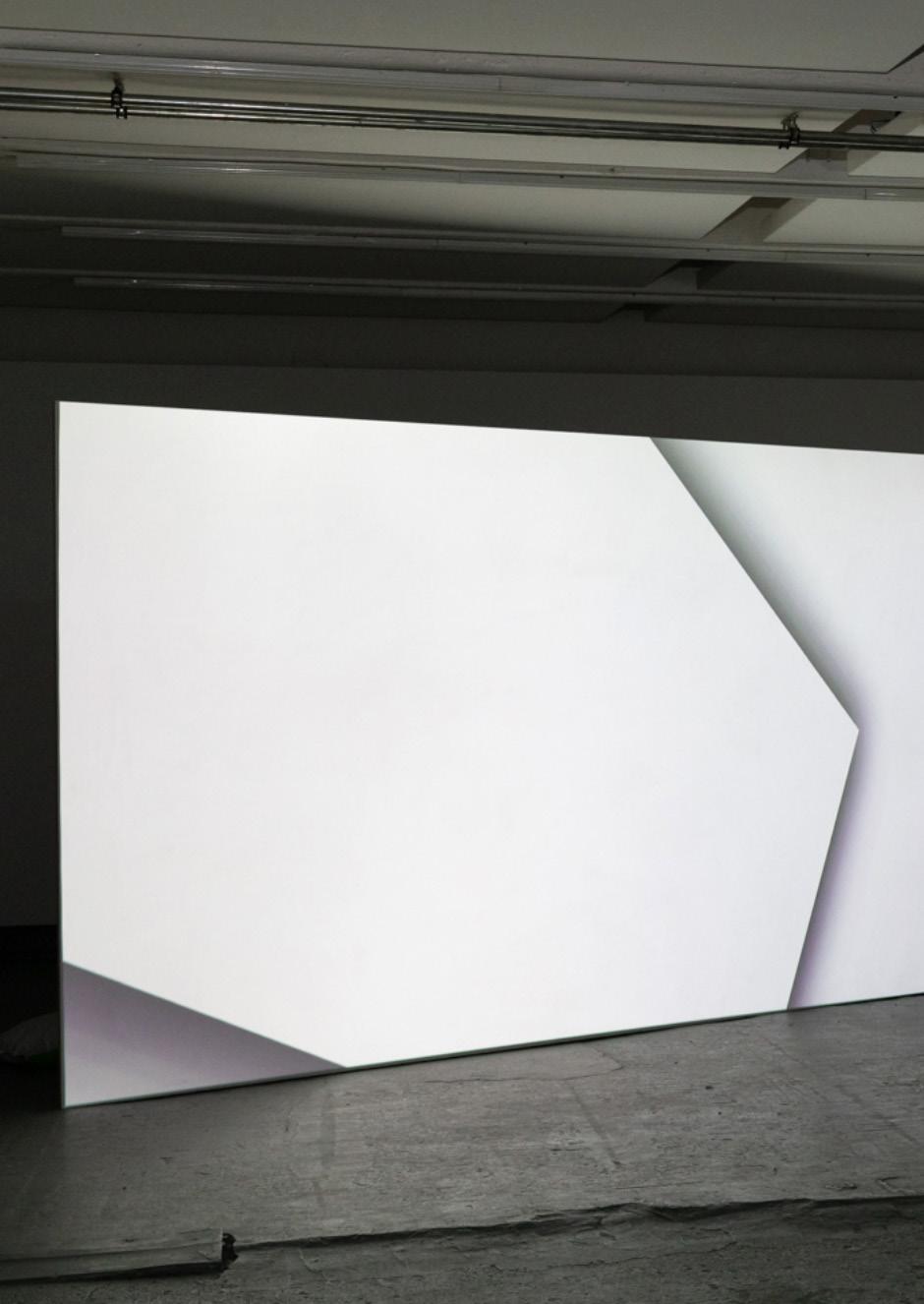
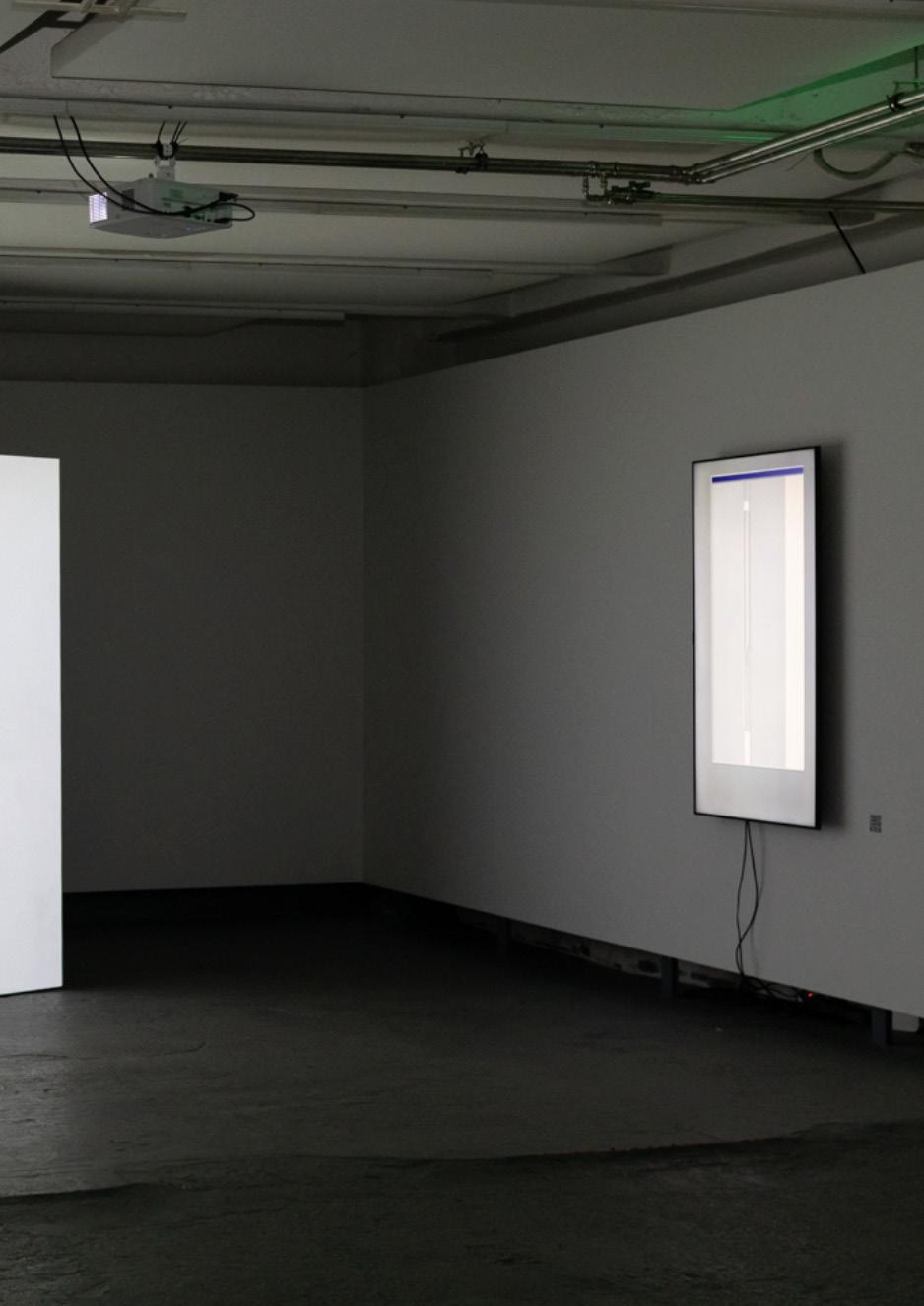
Repositions (2018) at Document Performance | Permanence (2023) Exhibition installation view at Panke Gallery
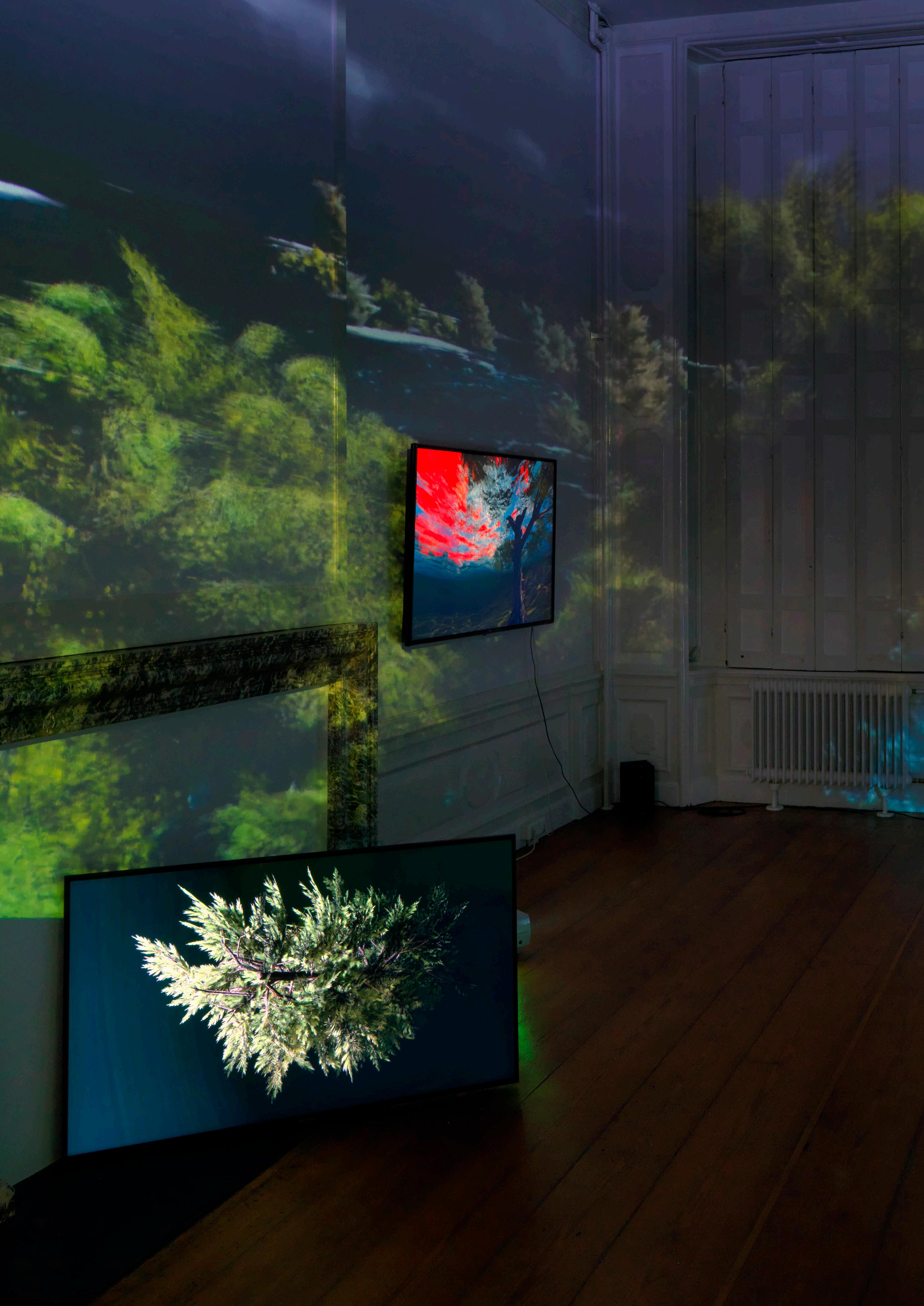
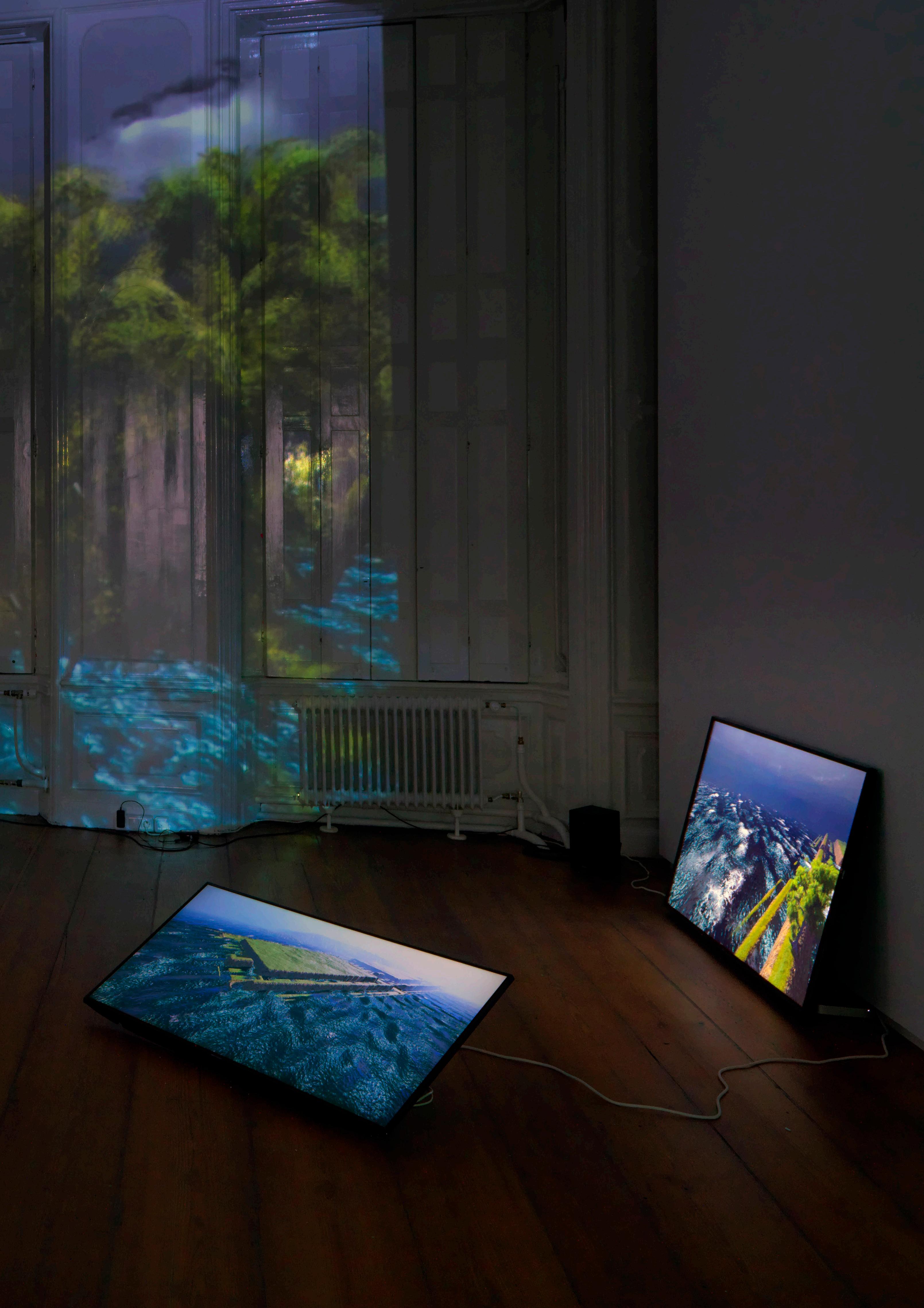
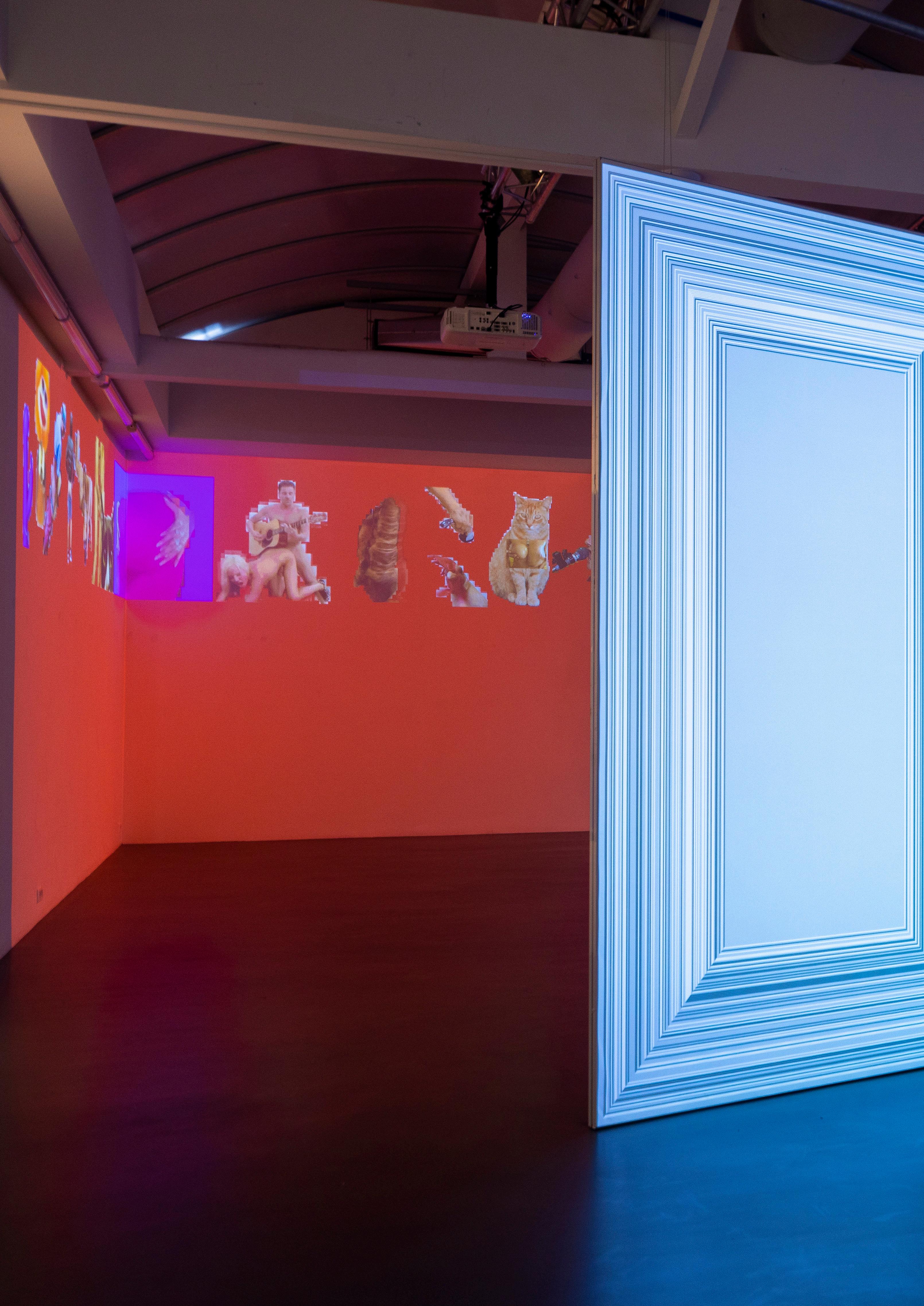
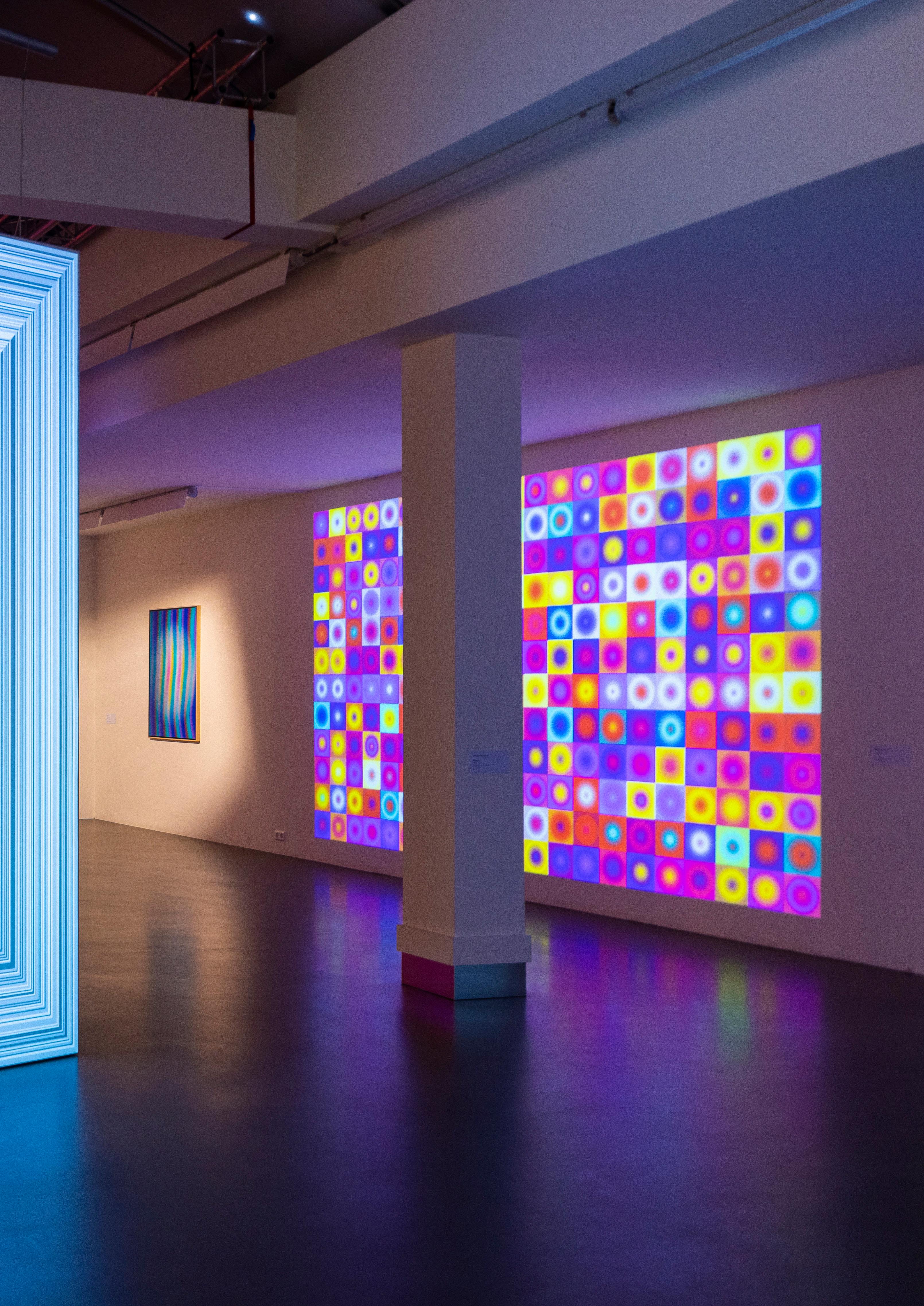
Ornament (2021) at Art and the Blockchain Exhibition installation view
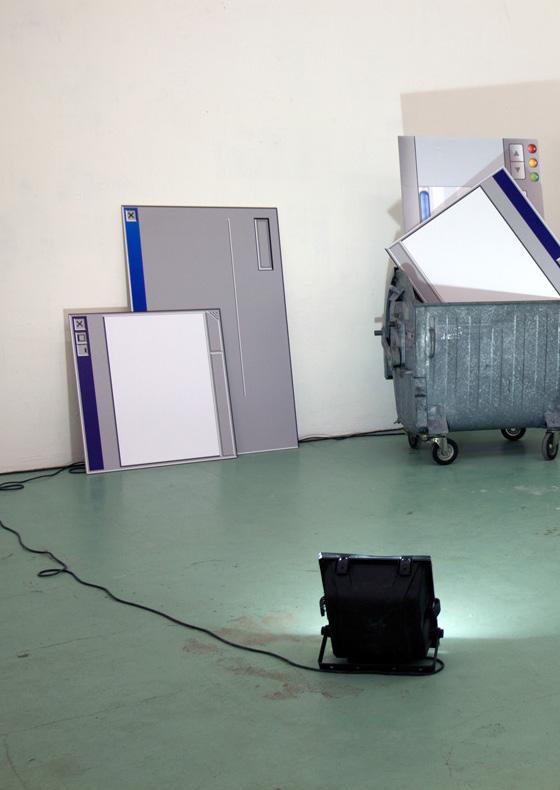
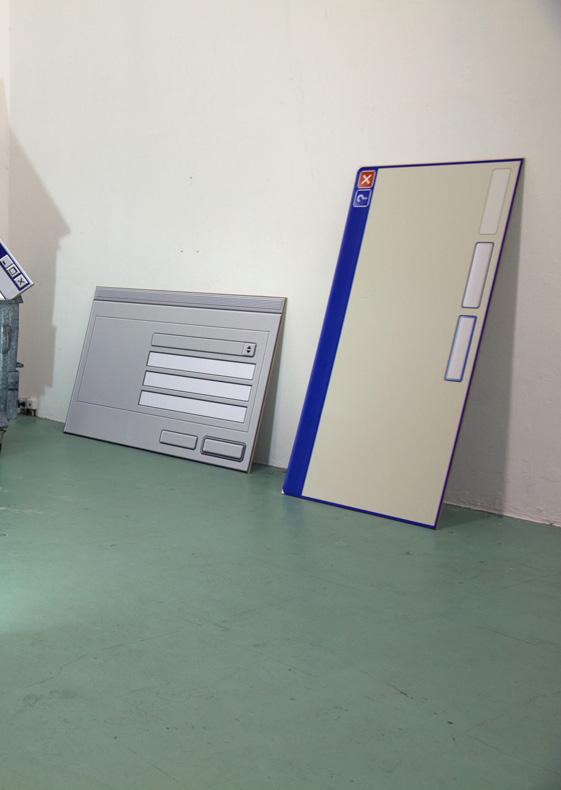
In his practice, Leegte explores the position of the new materials put forward by the (networked) computer, exploring all its wonders and peculiarities.
For his latest NFT series Walled Garden (2025), supported by FakeWhale, the artist created a enclosed wild garden, a sanctuary which we can look at and be looked at from, even own, but not enter.
Walled Garden is a 20-meter-diameter digital garden. A lush, natural scene with trees, grasses, and overgrowth, encircled by a high wall. Wind animates the foliage. The sun moves through the
day, the moon at night and at the garden’s centre in the grass lies a sculptural scrollbar, equal parts modern relic and digital readymade. Surrounding this secluded world are 150 openings punctured randomly into the wall at varying heights. Each NFT in the collection corresponds to one of these vantage points, each a fixed framed view into the interior garden. Here, sharing the experience of the same central procedural perspective creates a unique output rather than variation. These windows are not only visual compositions but also social interfaces: when hovering with the mouse, the collector’s name or wallet address appears in the windows on the opposite side, turning the experience into a subtle network of presence and observation. The architecture of the garden recalls Herman de Vries’ Sanctuary
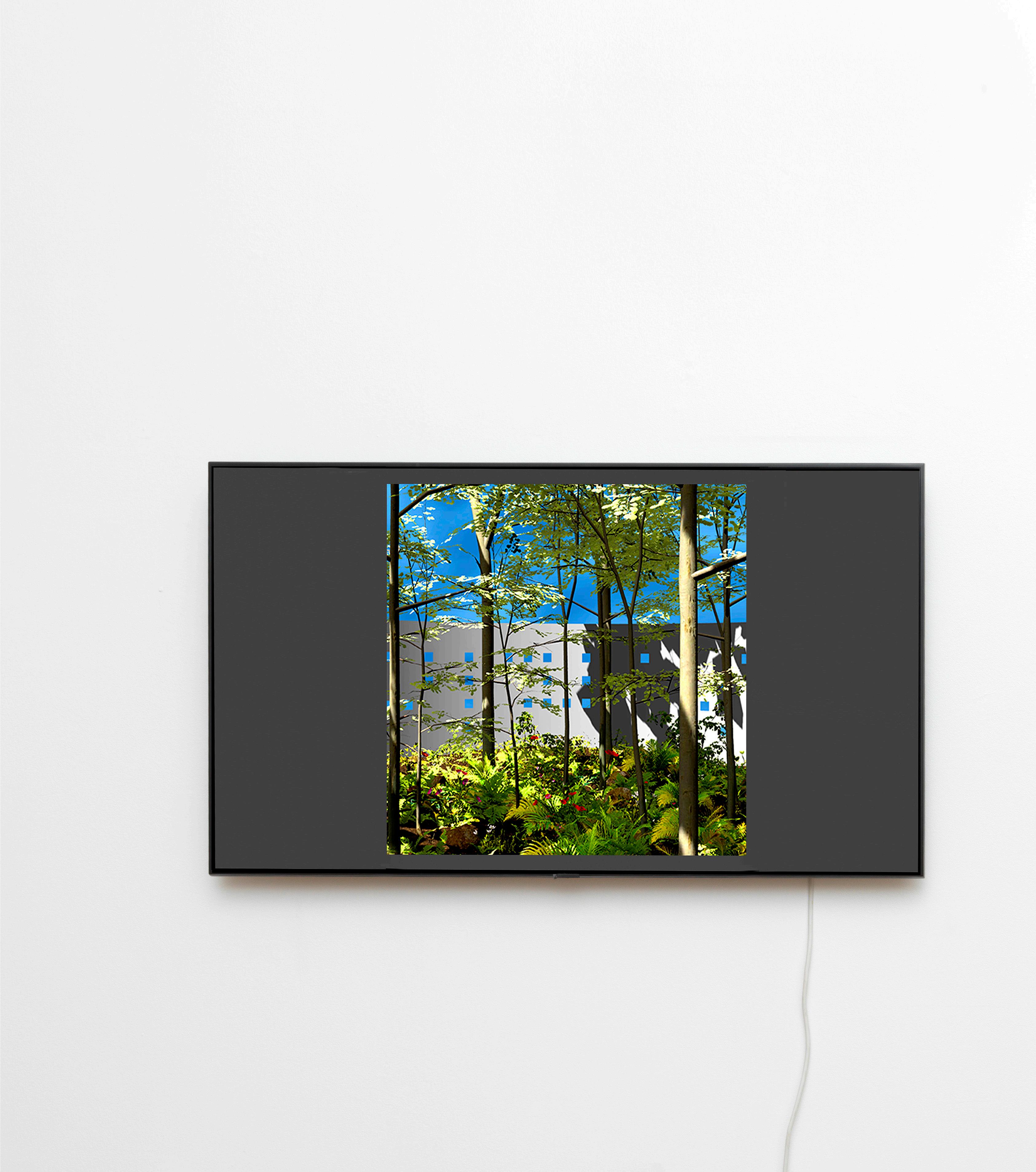
(1997)), in which the GUI becomes the wall to an online peep show. This aspect also brings in Marcel Duchamp’s Étant donnés, peeping at an online wild garden in all its beauty, only to become aware of all the others looking back.
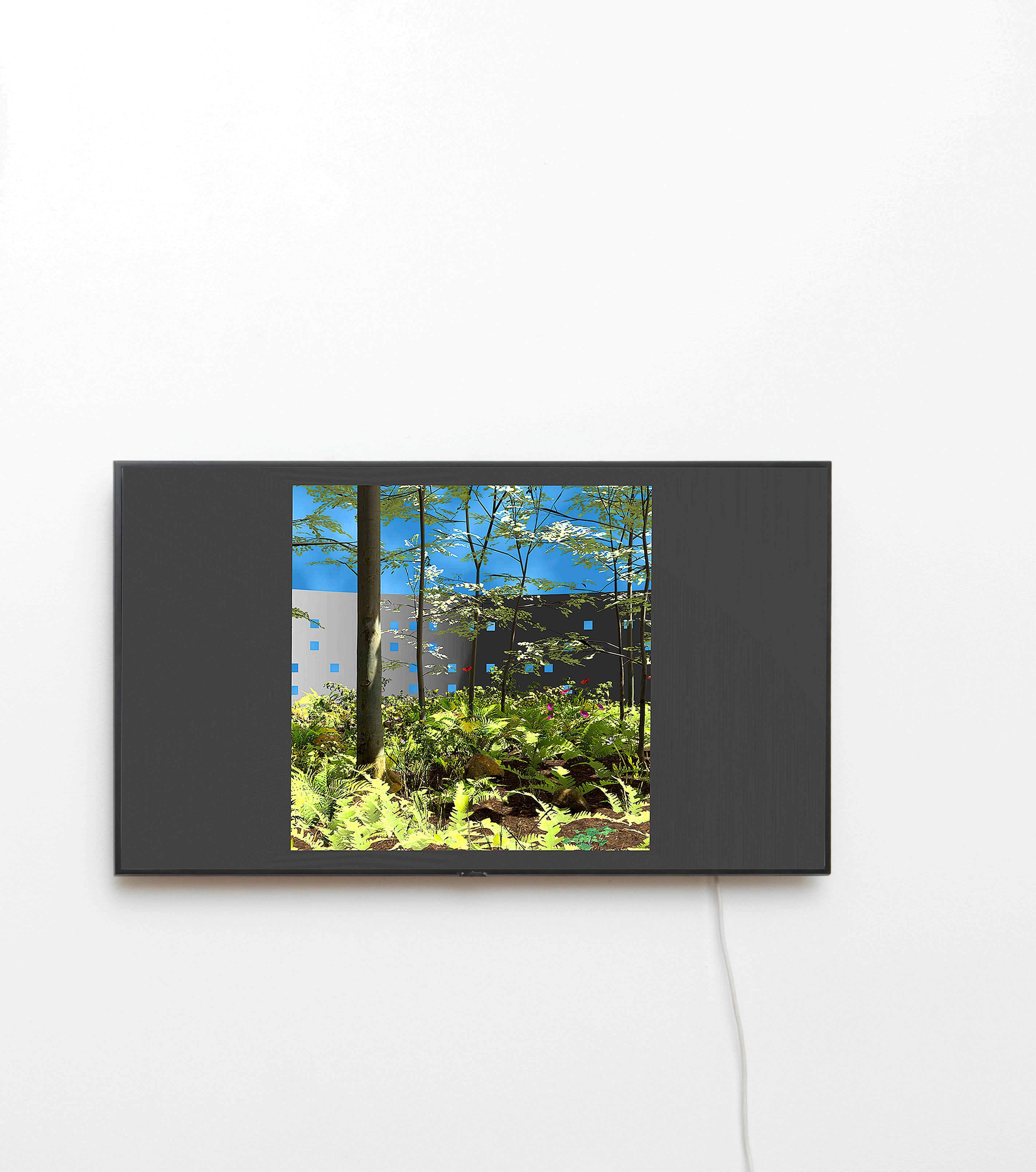

VIEW WORK HERE
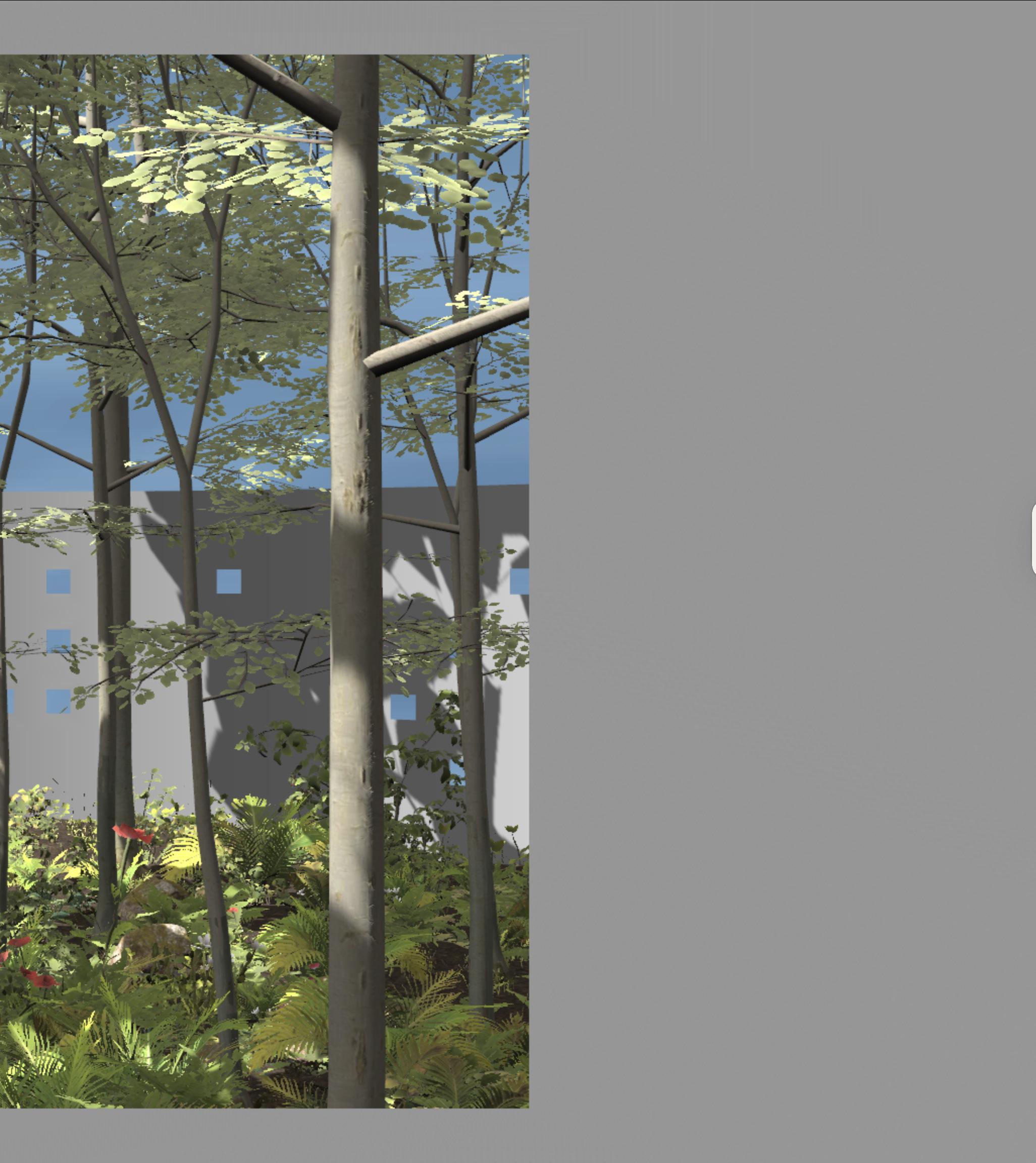
Light, 2025 NFT
Part of Walled Garden (2025) Dimensions variable Token #2 of #150 unique tokens
Mountains are grand natural statements of sculptural expression. They are birthplaces of sublime monumentality and romanticism. Their crumbs are the raw materials that provided us with a long tradition of sculpture.
In another realm, there is the ambiguous materiality of the digital, the human-made bits and bytes, in constant flow through systems, from which a new order of materials emerges at the surface of the interface.
Among them is the user interface phenomenon of the drop shadow. A material bereft of all our notions of materiality, it being nothing but the absence of light cast upon a surface due to an obstructing object. In the work, the shadow has been severed from a non-existent casting object making it less than nothing. But also the drop shadow being a digital simulacrum adds another step deeper into ethereality, making it almost a shadow of shadows. This places it in direct opposition to the most earthly rooted of them all, the mountain.
Mountains and Drop Shadows is a continuation of a line of work going back to 2013, with the net art piece https://www.mountainsanddropshadows. com in which a live script would continuously fetch images tagged ‘mountains’ from online databases. Because of this, the landscapes would become anonymised and delocalised, merely becoming an image, often ending as a humble desktop image.
For the most recent iteration of the work, querying databases felt like a thing of the past, as all those images have been added to the datasets of various image-generating AI services. Mountains and Drop Shadows, 2023 uses AI-generated mountain images, a mashup of all images of existing mountains, fully erasing the photographer’s subjectivity and a-localising the image.
The work is a sculptural desktop standoff between a mountain dreamt up by the internet and a drop shadow. Embodiment vertigo on the summits of the interface.

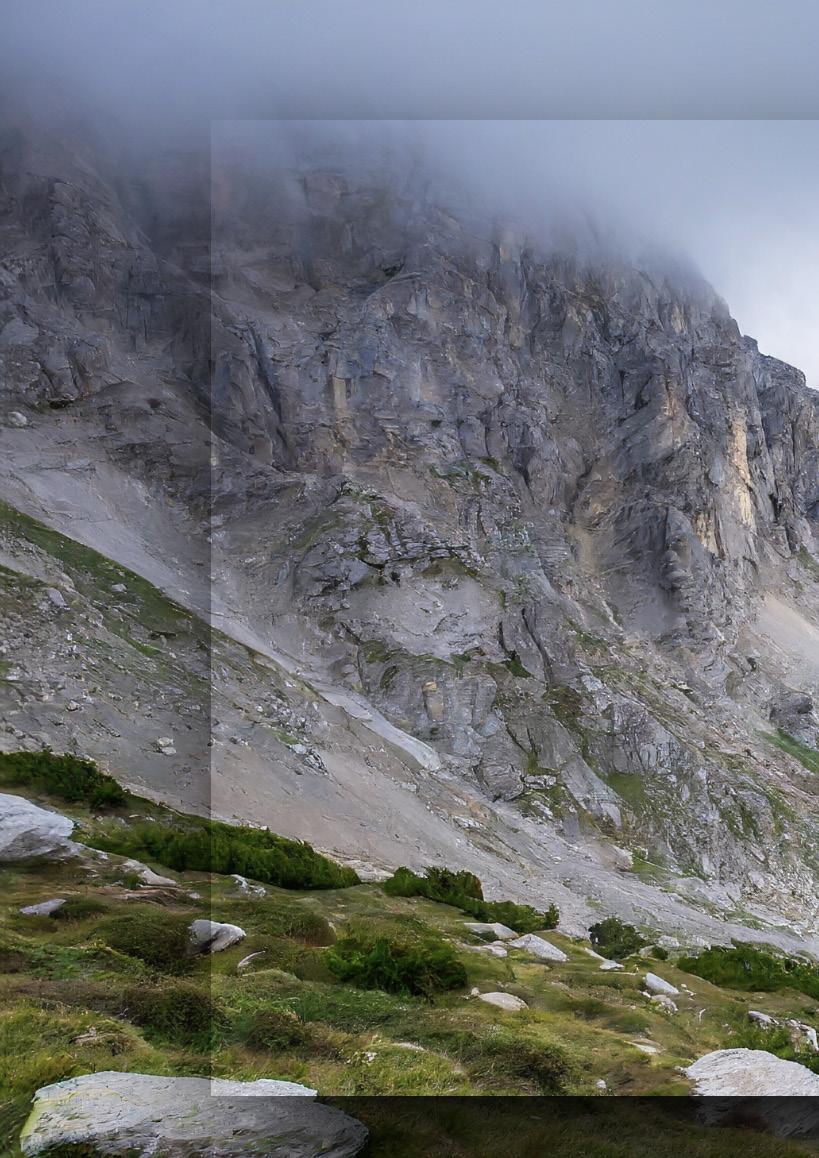
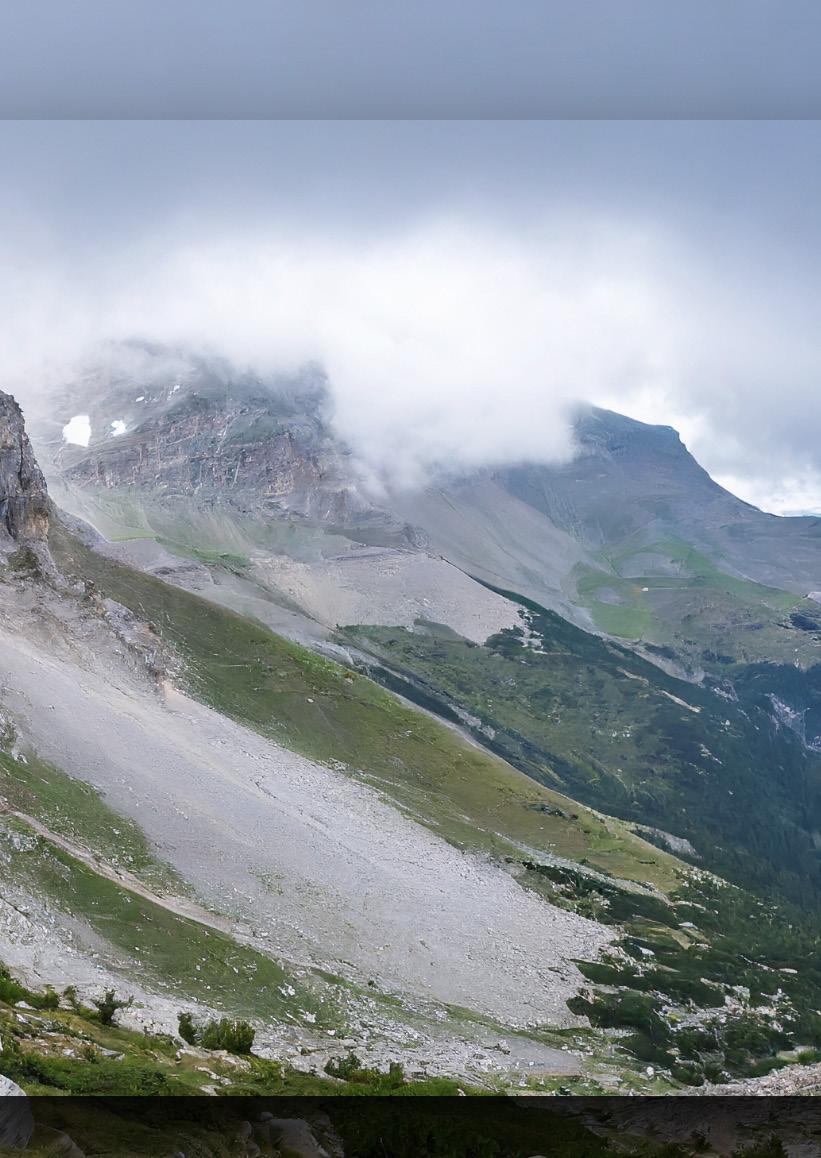
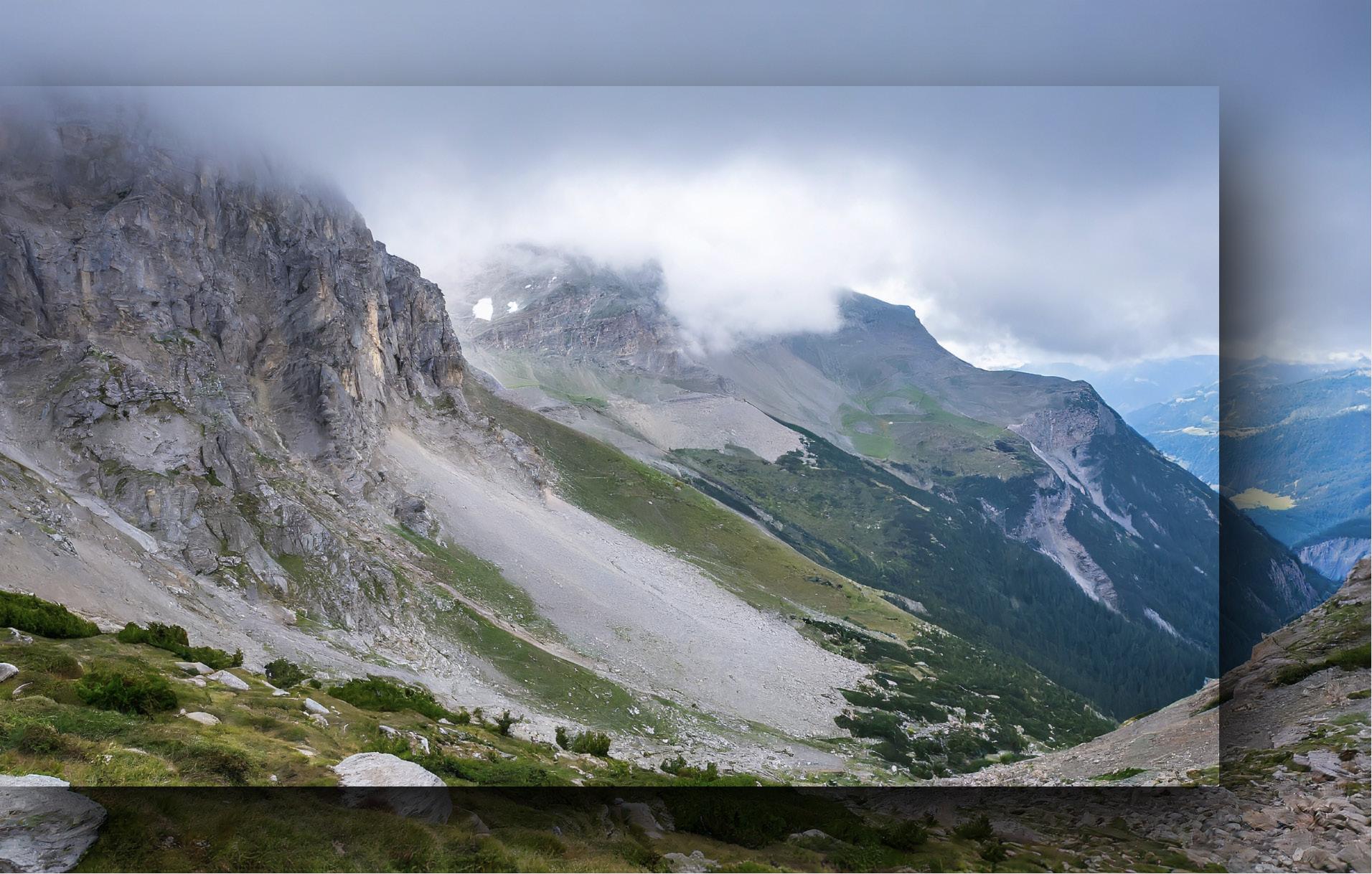
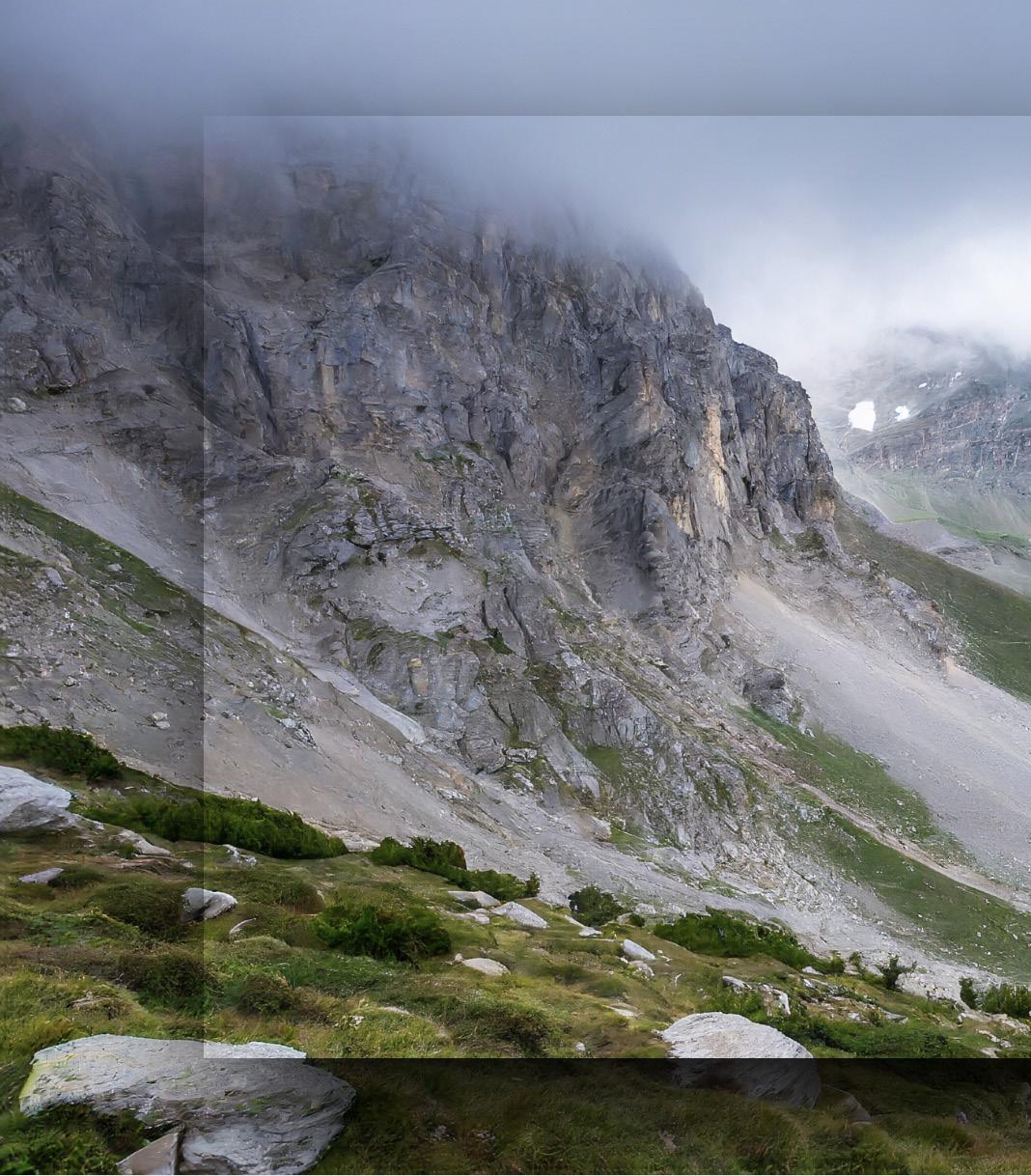
Mountains and Drop Shadows, 2023
Generative software on NUC
Dimensions variable, duration infinite
Edition of 3 plus 1 artist’s proof (#1/3)
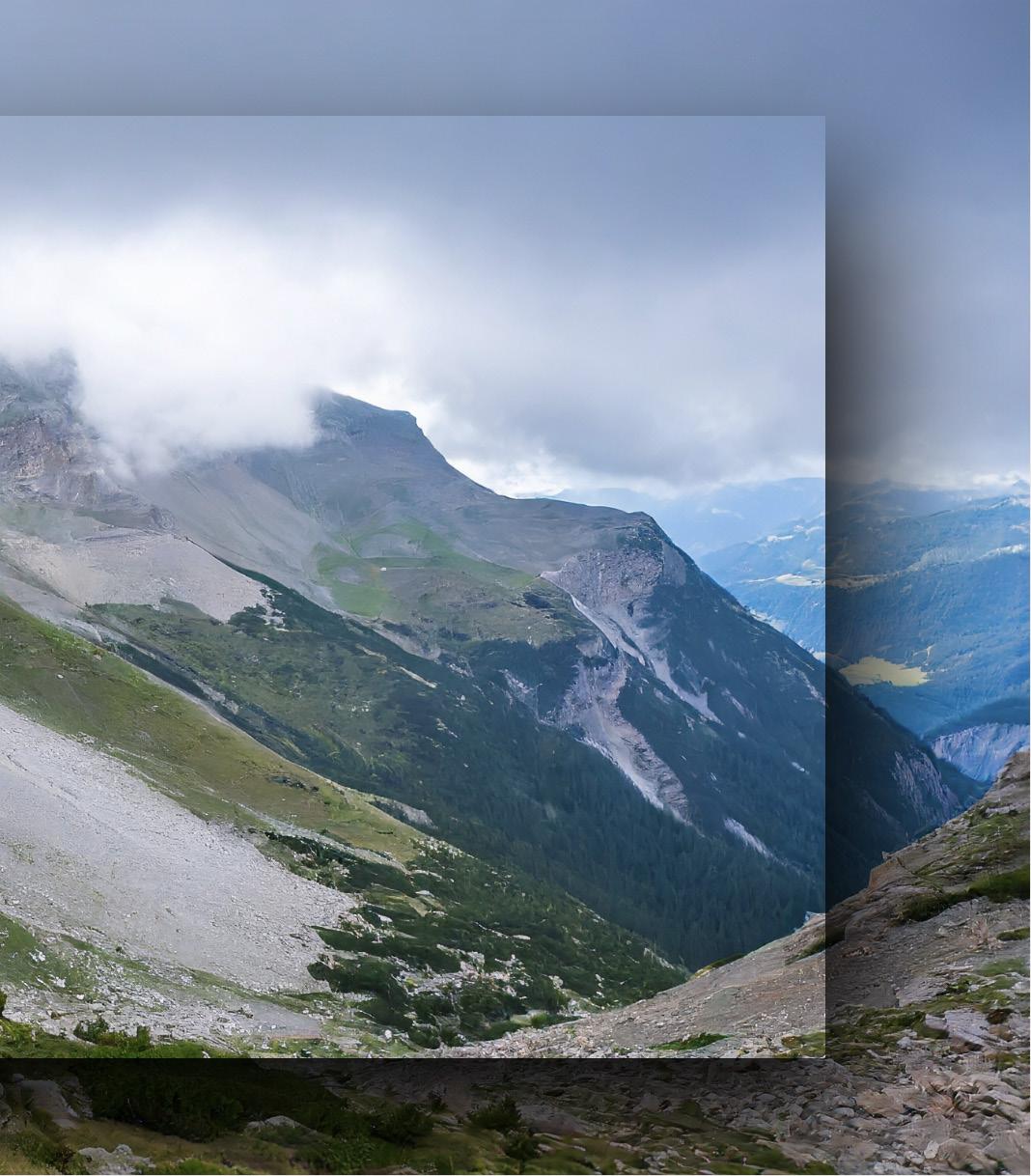
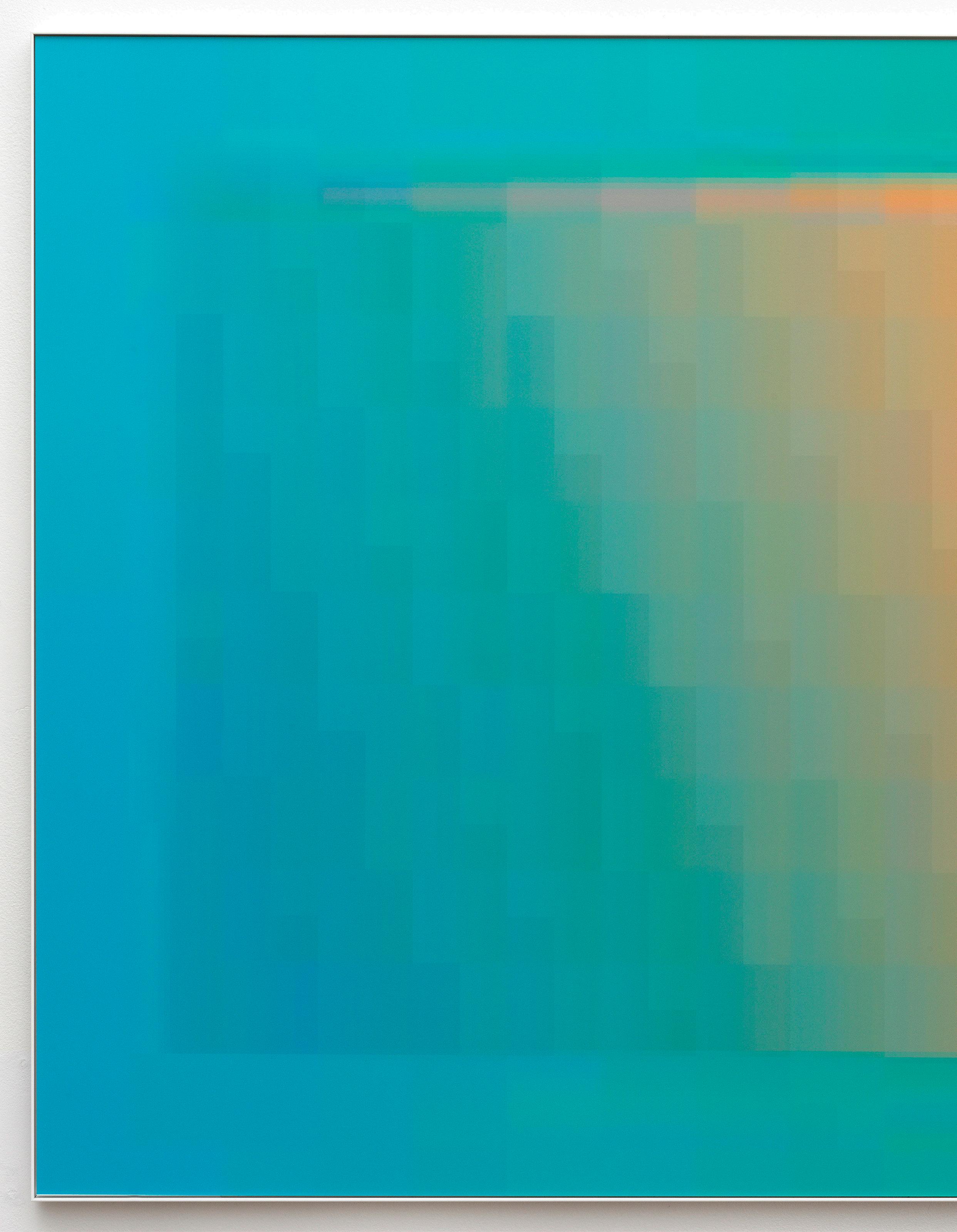

Since the early 90s, compression has been the driving force behind the image-based internet. Without compression, there would be no Netscape, social media, NFTs, or AI-generated images. JPEG compression has specifically enabled photography- based imagery on the net. It has always served that purpose, and over time became the default for showing high-quality images online. Nevertheless, compression always leaves a trace, which has become the slightly distorted lens through which the network sees the world of uploaded images.
The works from the JPEG series try to create an image programmatically fully expressing that signature compression. An image that is made from barely nothing, yet fully present in its blazing appearance. A work deeply material, expressing itself through the language of code and codec transferred to a plate of aluminum. This is not a JPEG depicting an image. The JPEG is the image itself.
Where abstract expressionists cut out the depiction in painting, attempting to make the artist convey pure emotion, JPEG cuts out the artist’s emotion and lets it emerge from within the algorithm.
Works from the JPEG series are sold as NFT’s and Chromolux prints.
JPEG (0x1d64fdccd29819afeb78ad8a19beb25bf27d00a4aab1a7f38fe7297c44326e43), 2023
ChromaLuxe print in aluminium frame
80 x 80 cm
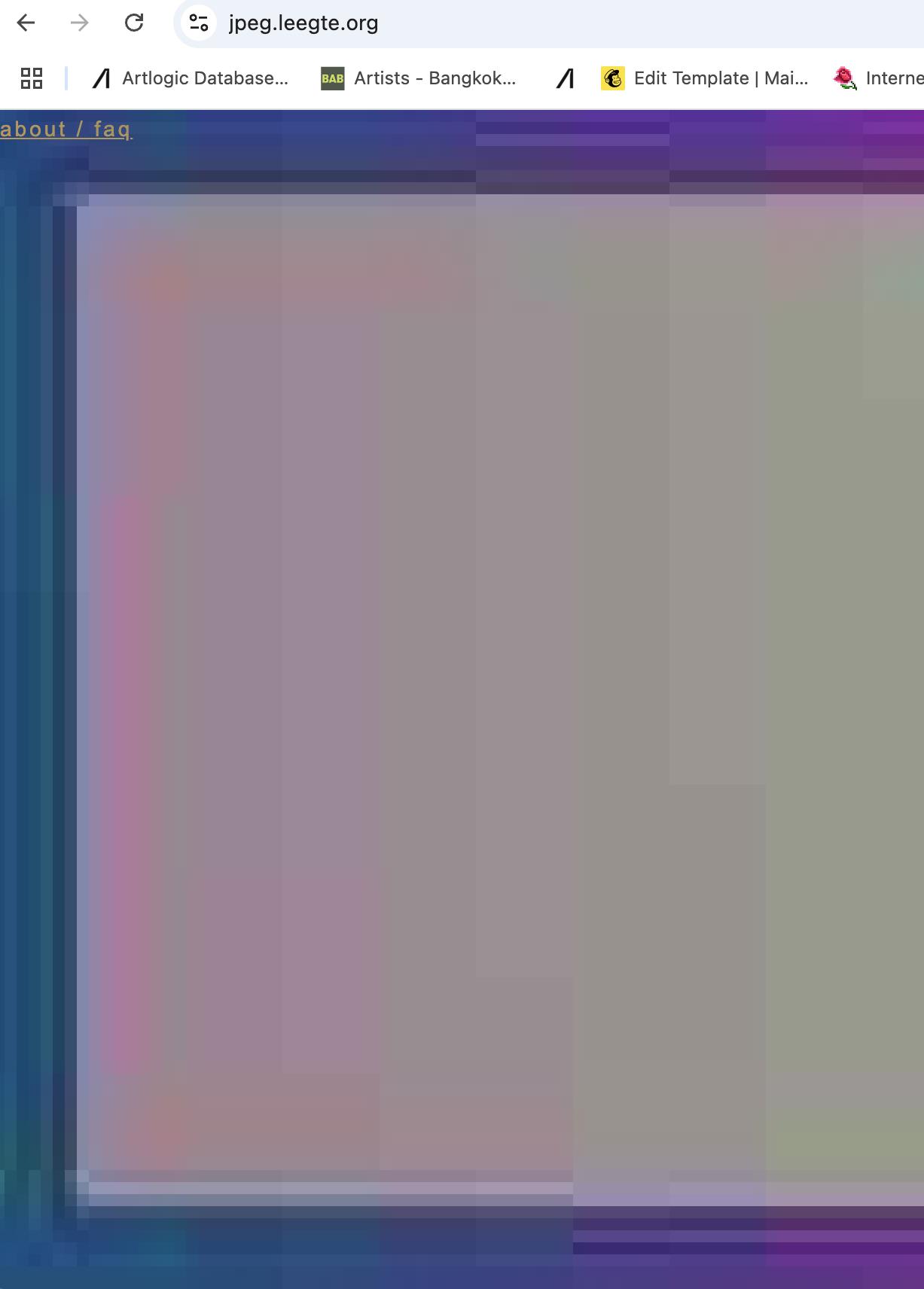
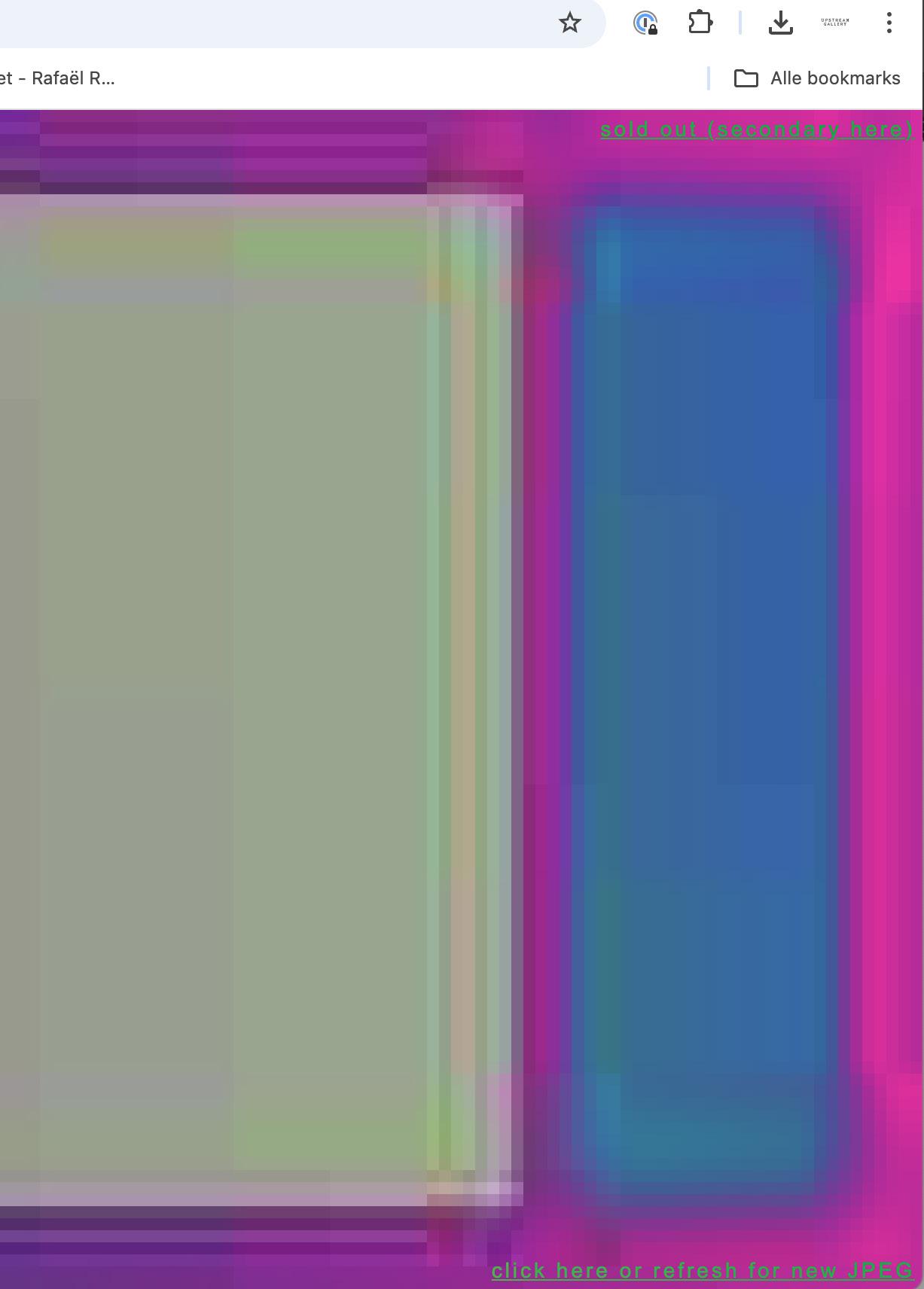
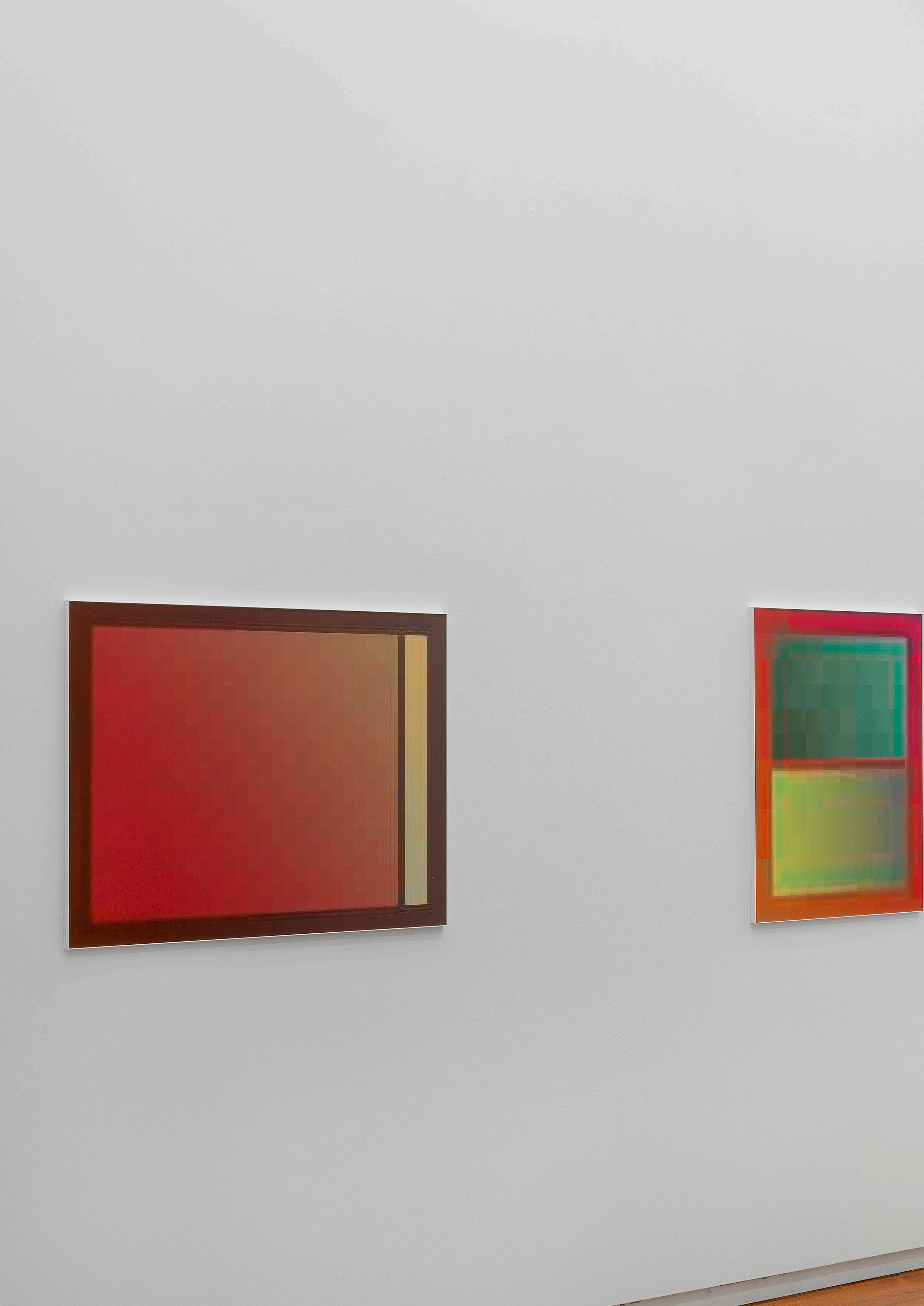
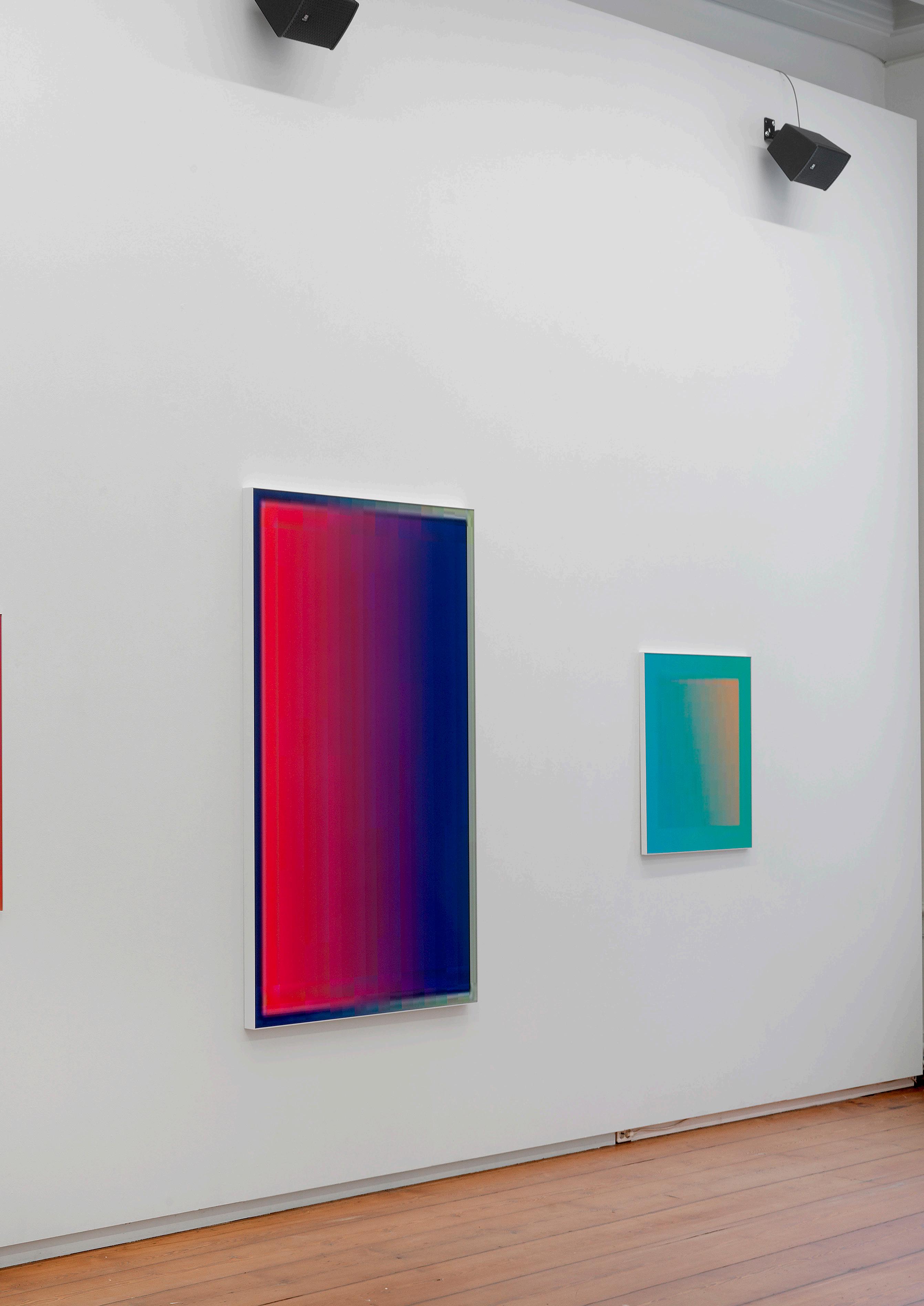
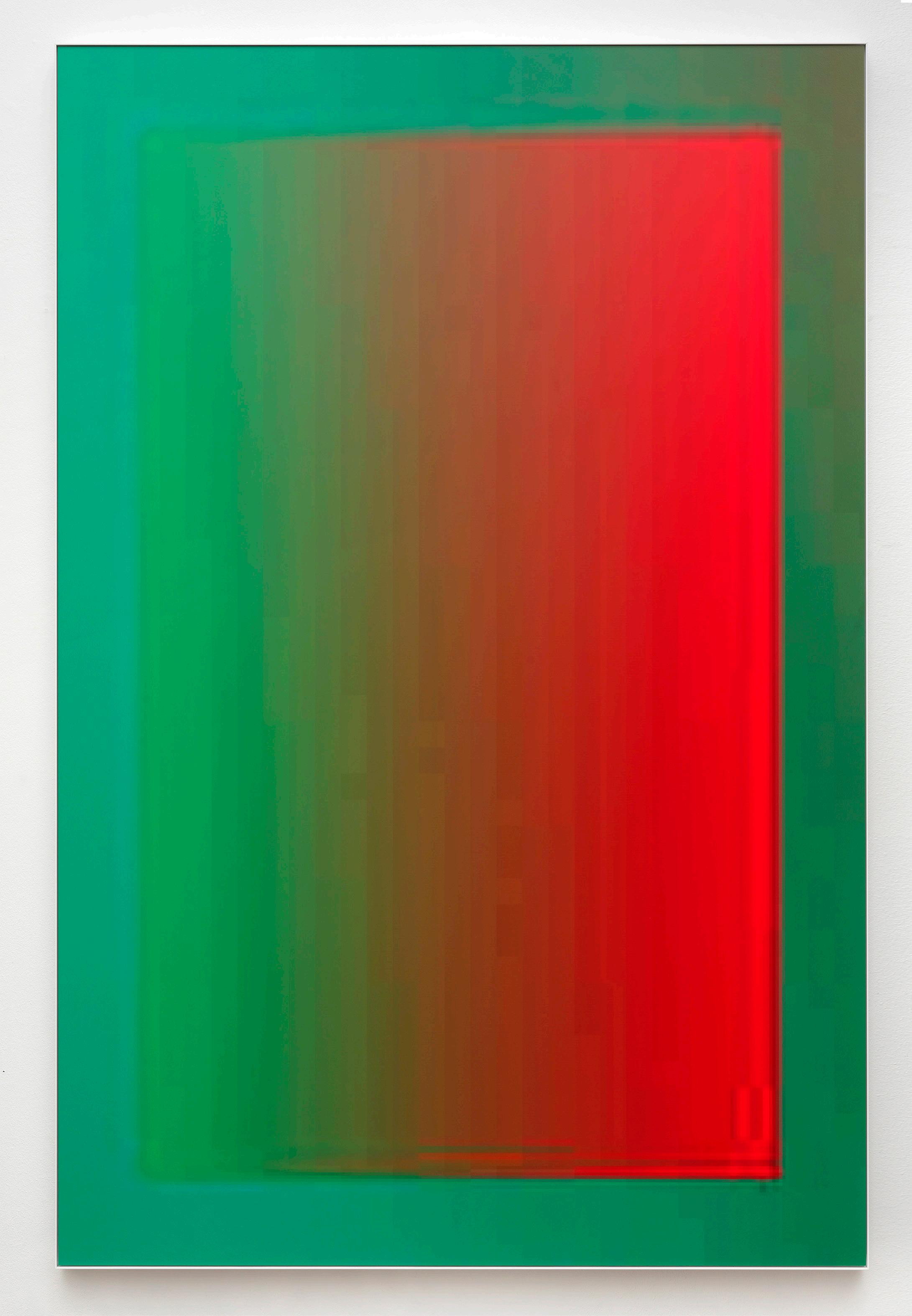
JPEG (0x68c79f9718a7112b2b), 2024
print in aluminium frame
150 x 100 cm
JPEG (0xa8f8677b2bbb19db30), 2024 ChromaLuxe print in aluminium frame
150 x 100 cm
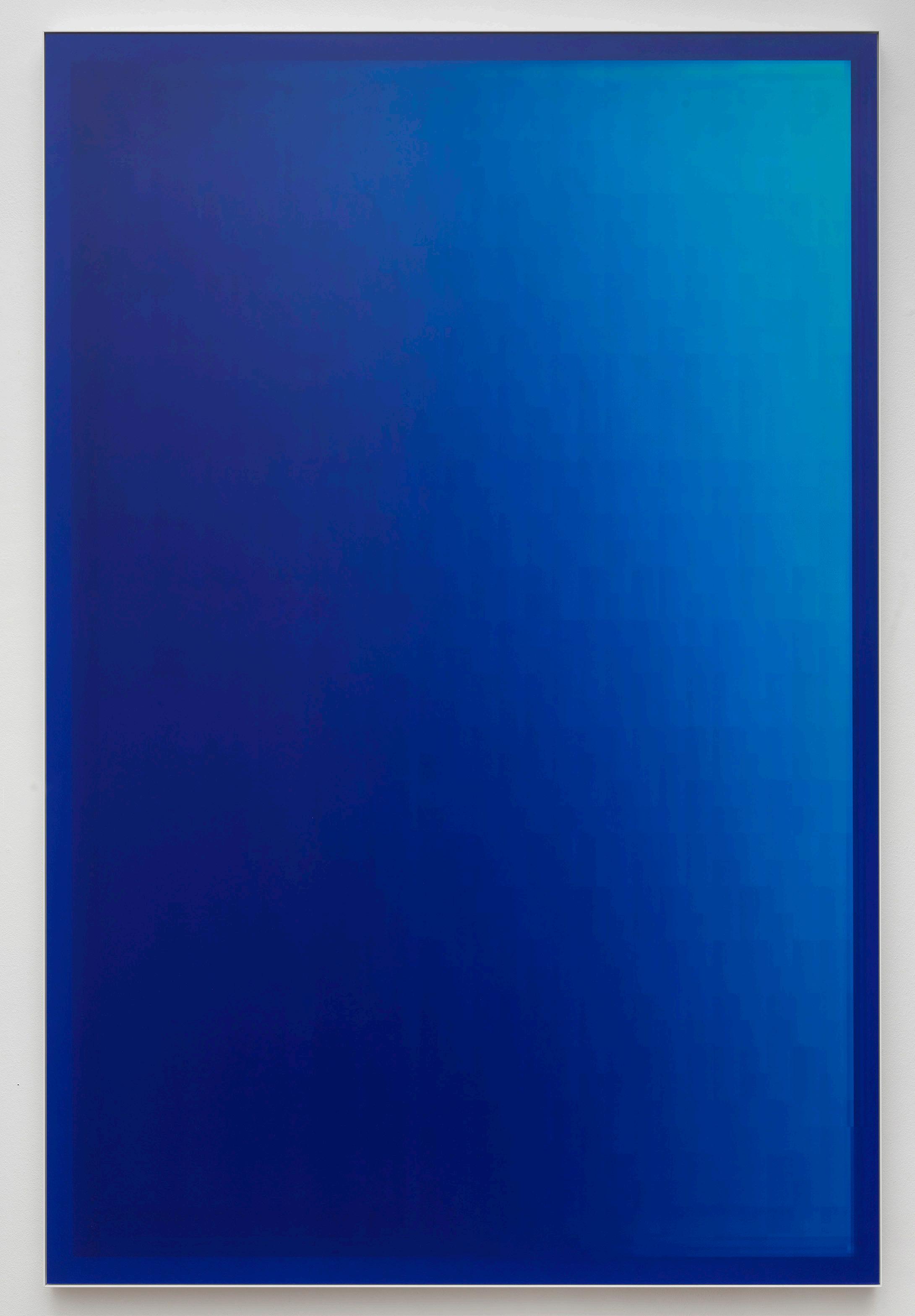
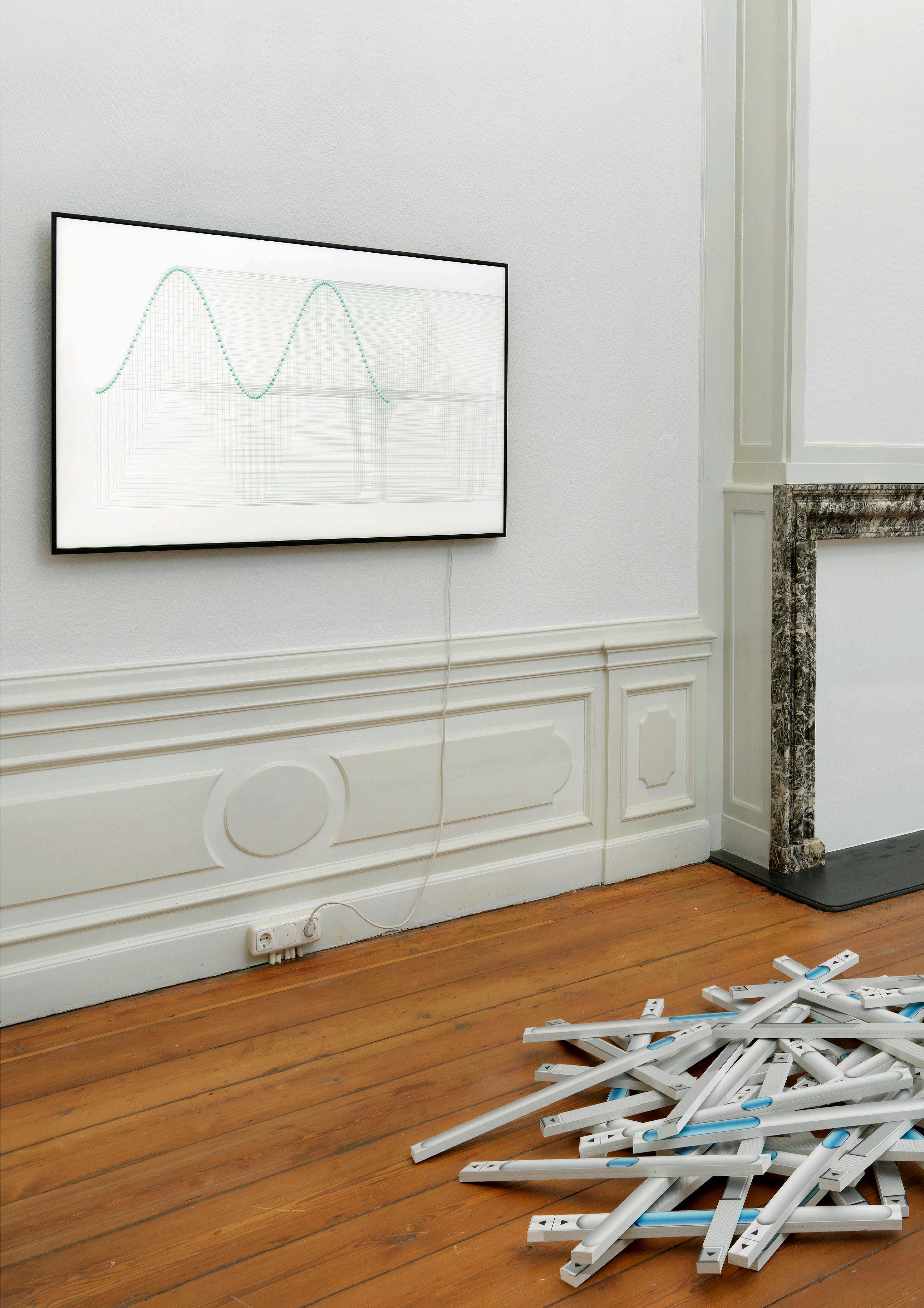

No Content - Contemplations on Software (2023) (solo) Exhibition installation view at Upstream Gallery
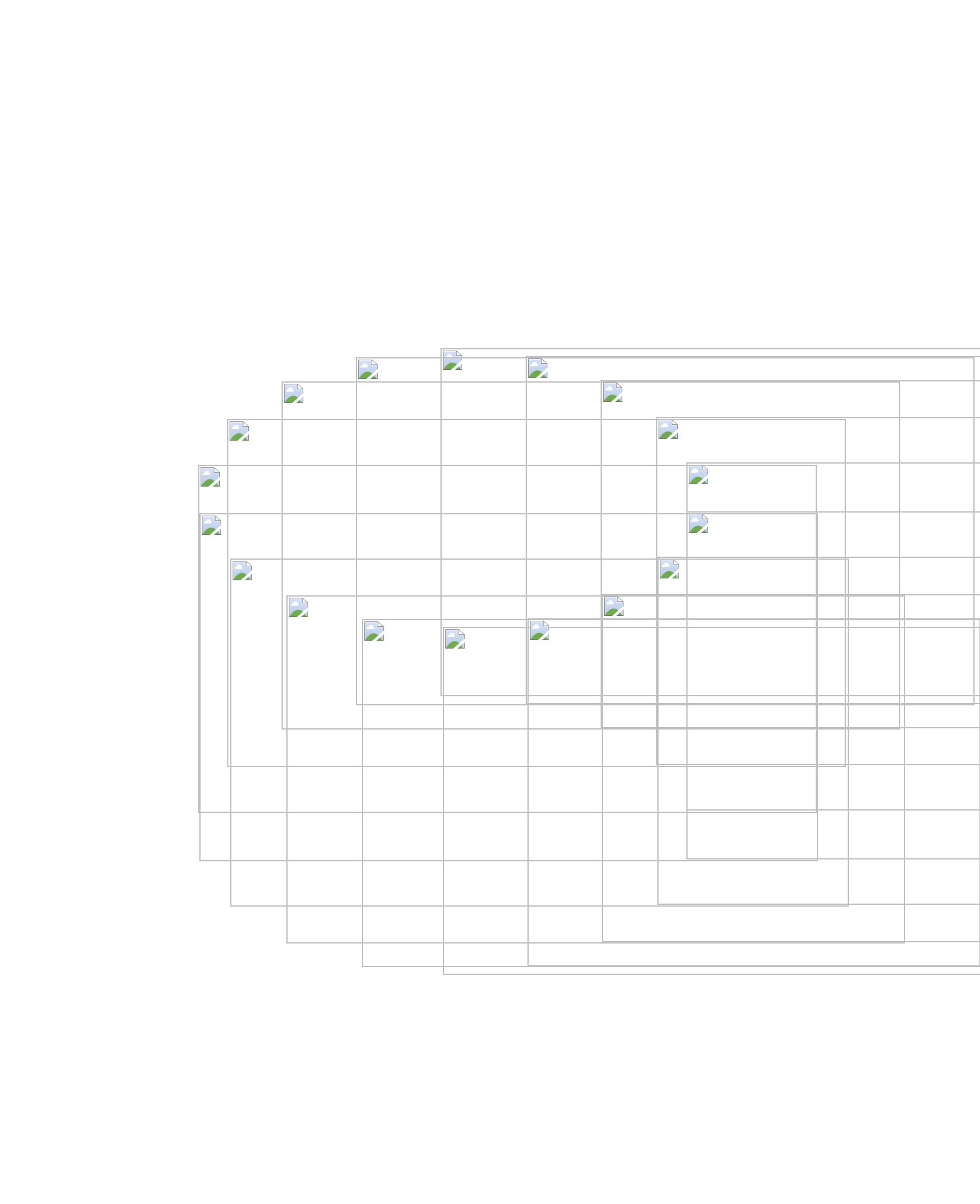
Broken Images No. 20, 2023 handmade on-chain responsive HTML NFTs

The most infamous broken link is the 404 error. The error stands for “file not found”. An example is an image on a webpage that refers to an address that is non-existent. When this happens, the browser shows a beveled outline of the missing image with an icon of a broken image in the top left corner.
The vast majority of NFTs are minted links to images stored elsewhere on servers. In the NFT collection Broken Images, the absence of that image is shown by minting broken links. Using the broken image as the visual element, the work is produced as small web pages that contain compositions of broken images and are hosted on-chain on the Ethereum blockchain. The webpages are responsive and will shape-shift both according to the operating system and browser that you choose and transform in the future to reflect the underlying technology.

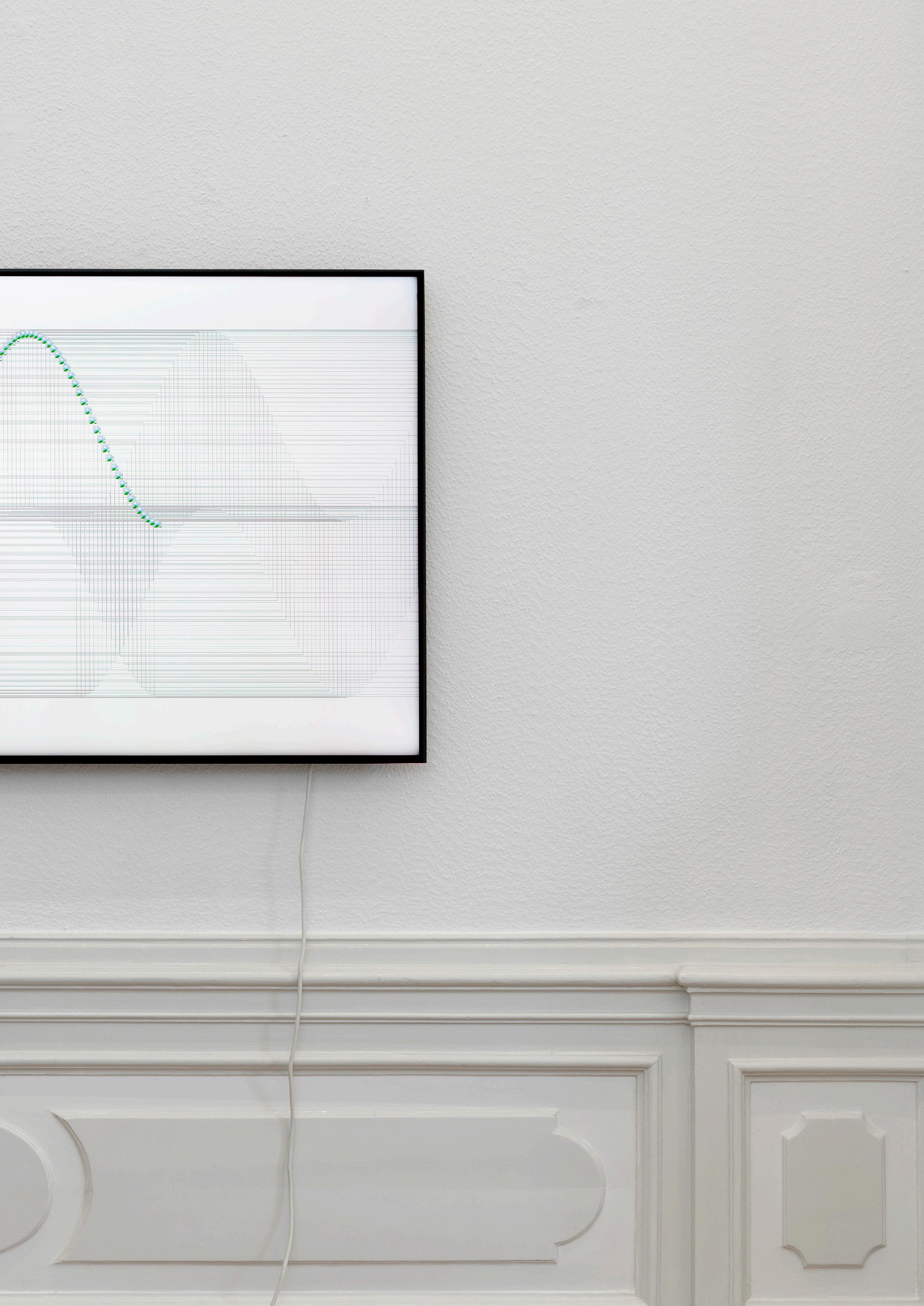
Washed ashore from decades ago are numerous obsolete scrollbars. A scrollbar is an interface to a content space. A set space that can be moved around for us to explore it. With the scrollbar decoupled from its original purpose, it points to nothing, becoming a broken link. It becomes a sculptural entity with an empty space as an appendix. Leaving behind the memory of decades of internet culture.
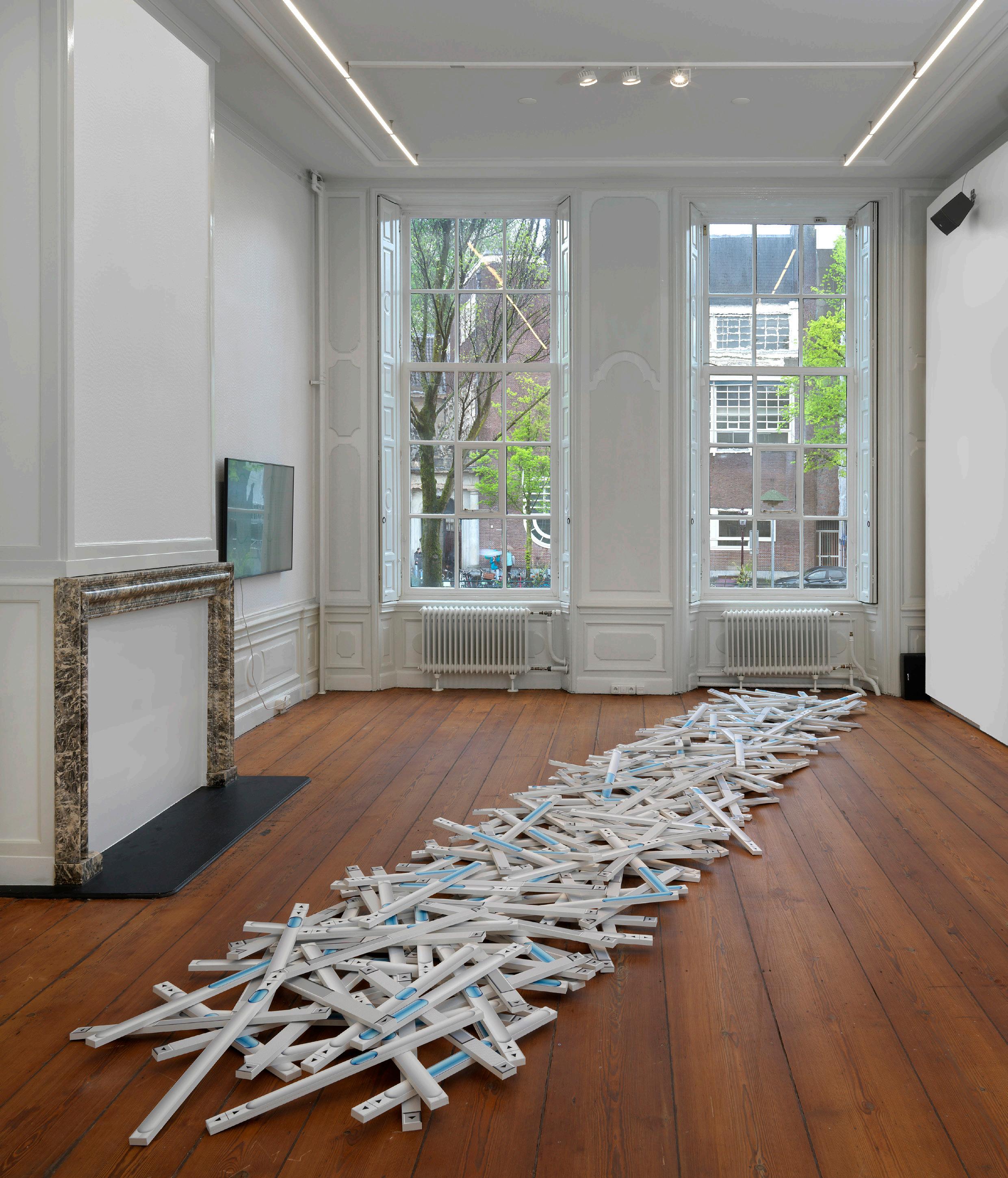
Scrollbars, 2023
Floor sculpture, Archival print on forex
Dimensions variable, site-specific
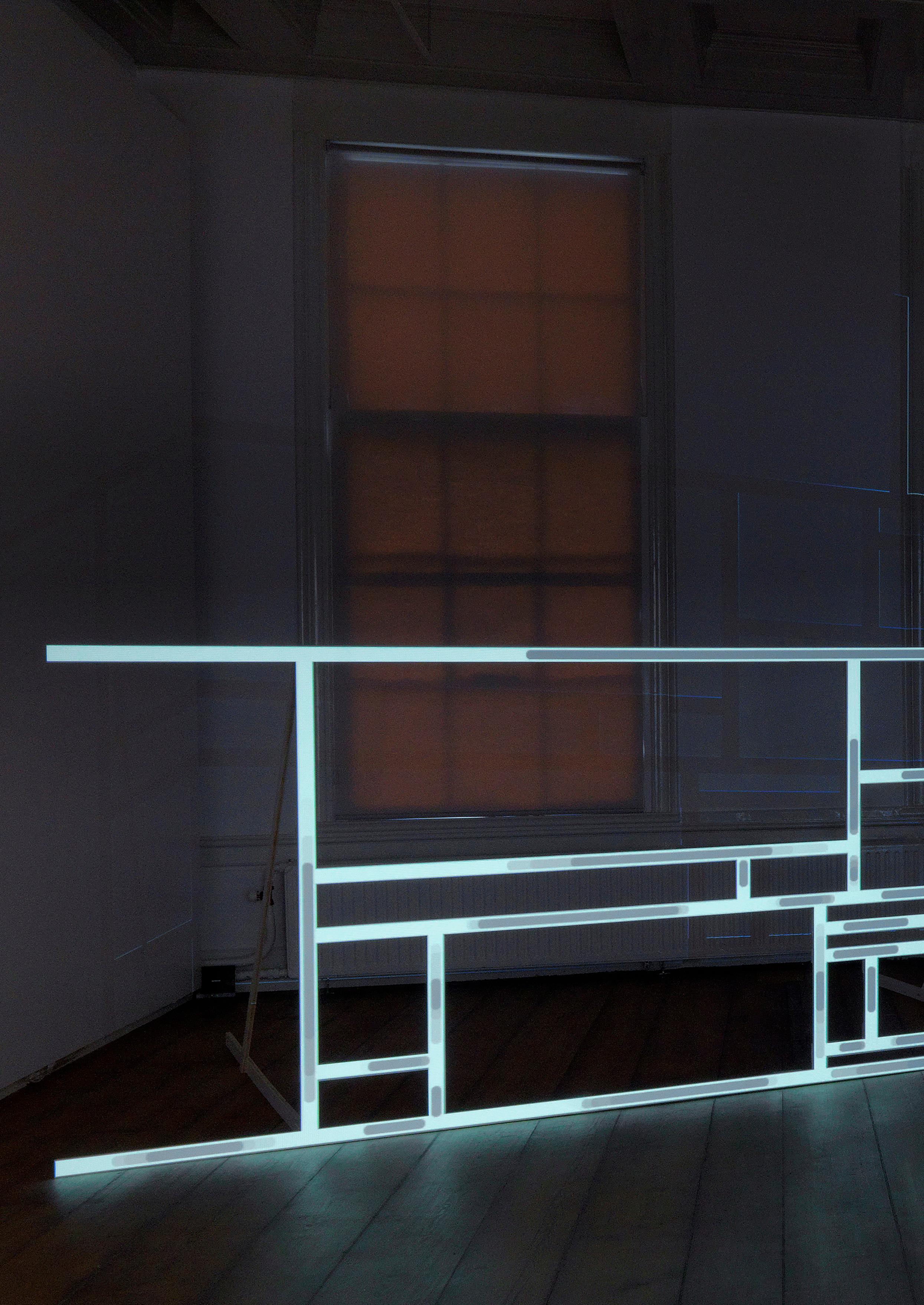
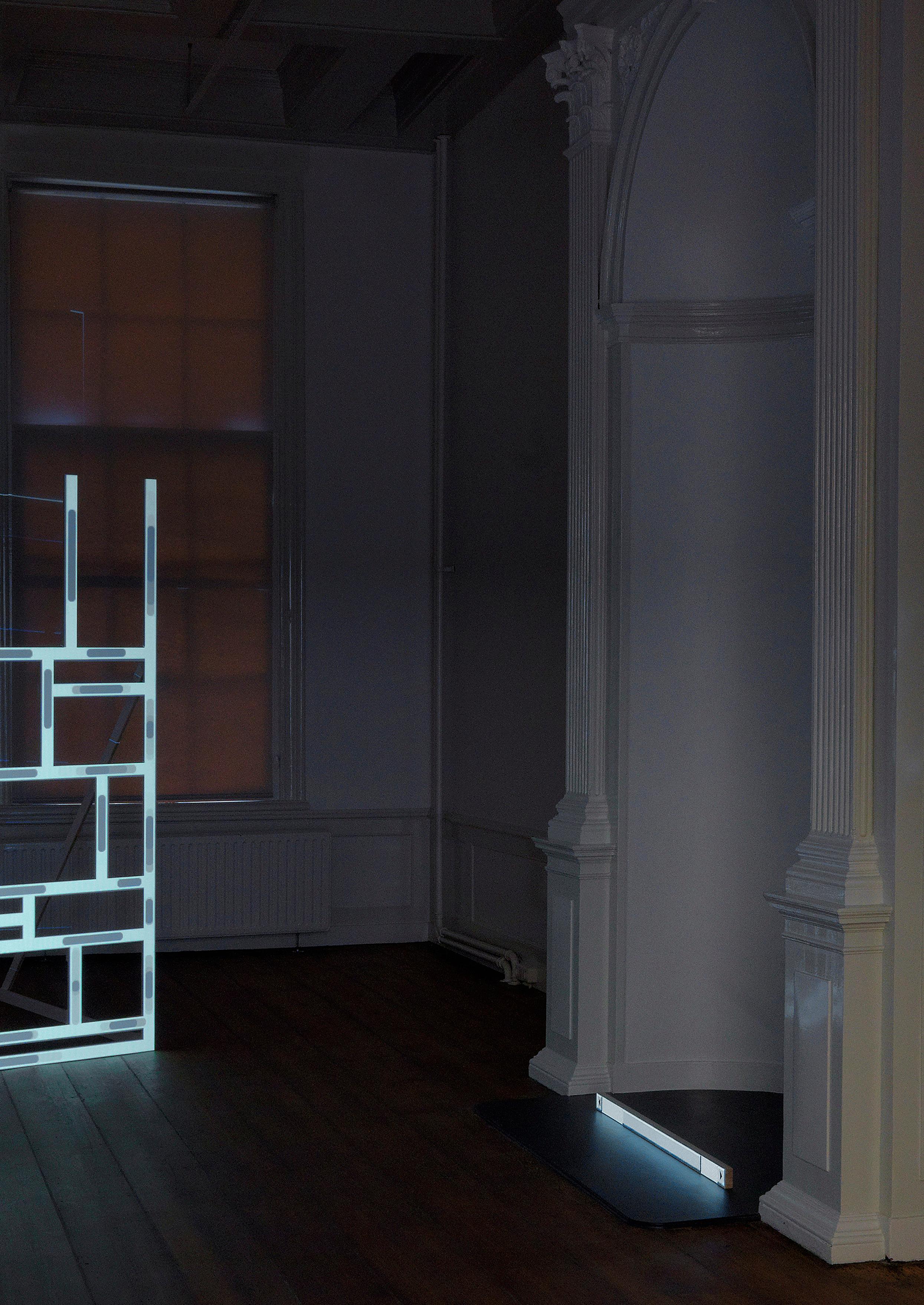
Scrollbar Composition, (2017)
Wooden construction, computer projection
373 x 266 x 244 cm
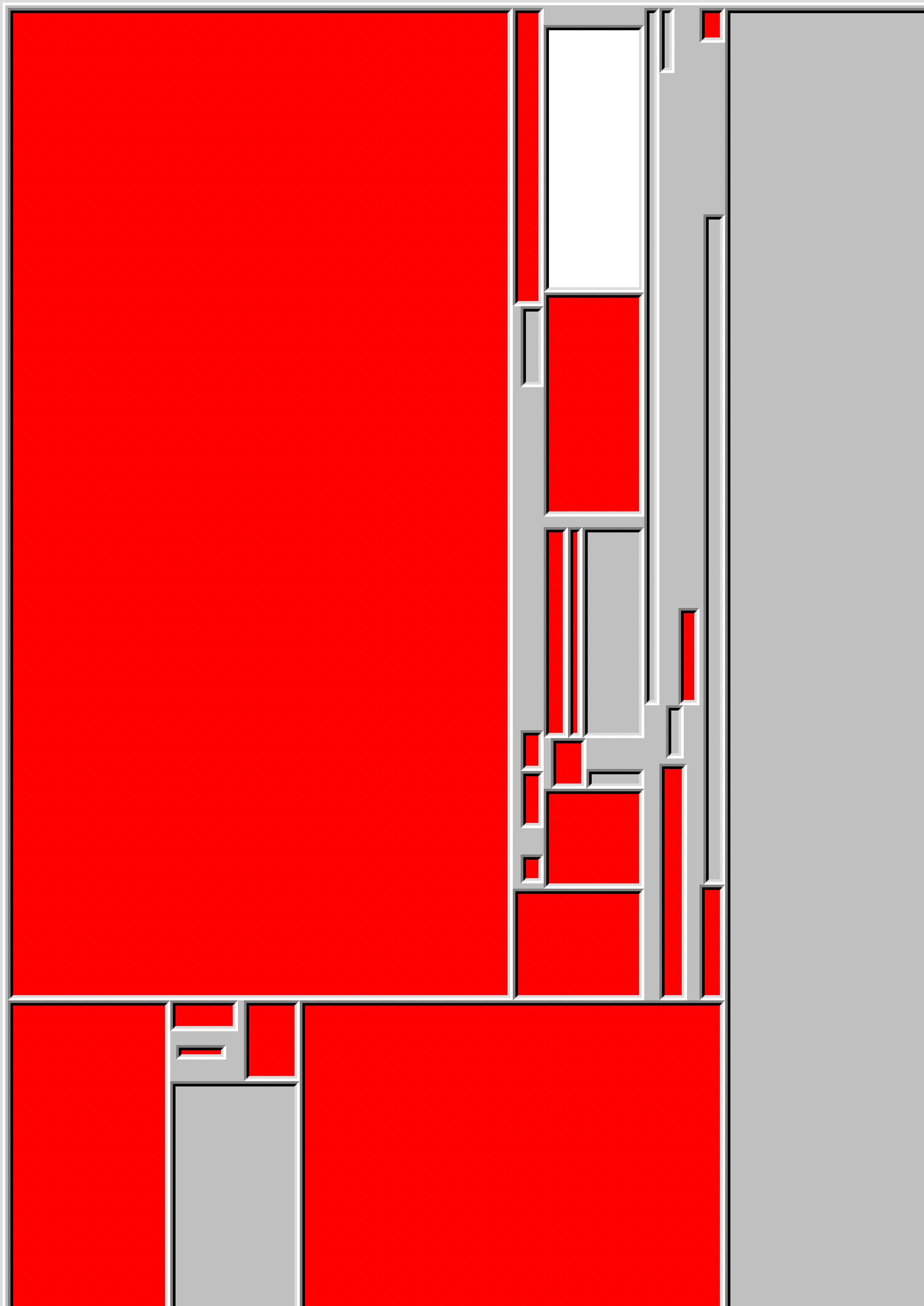
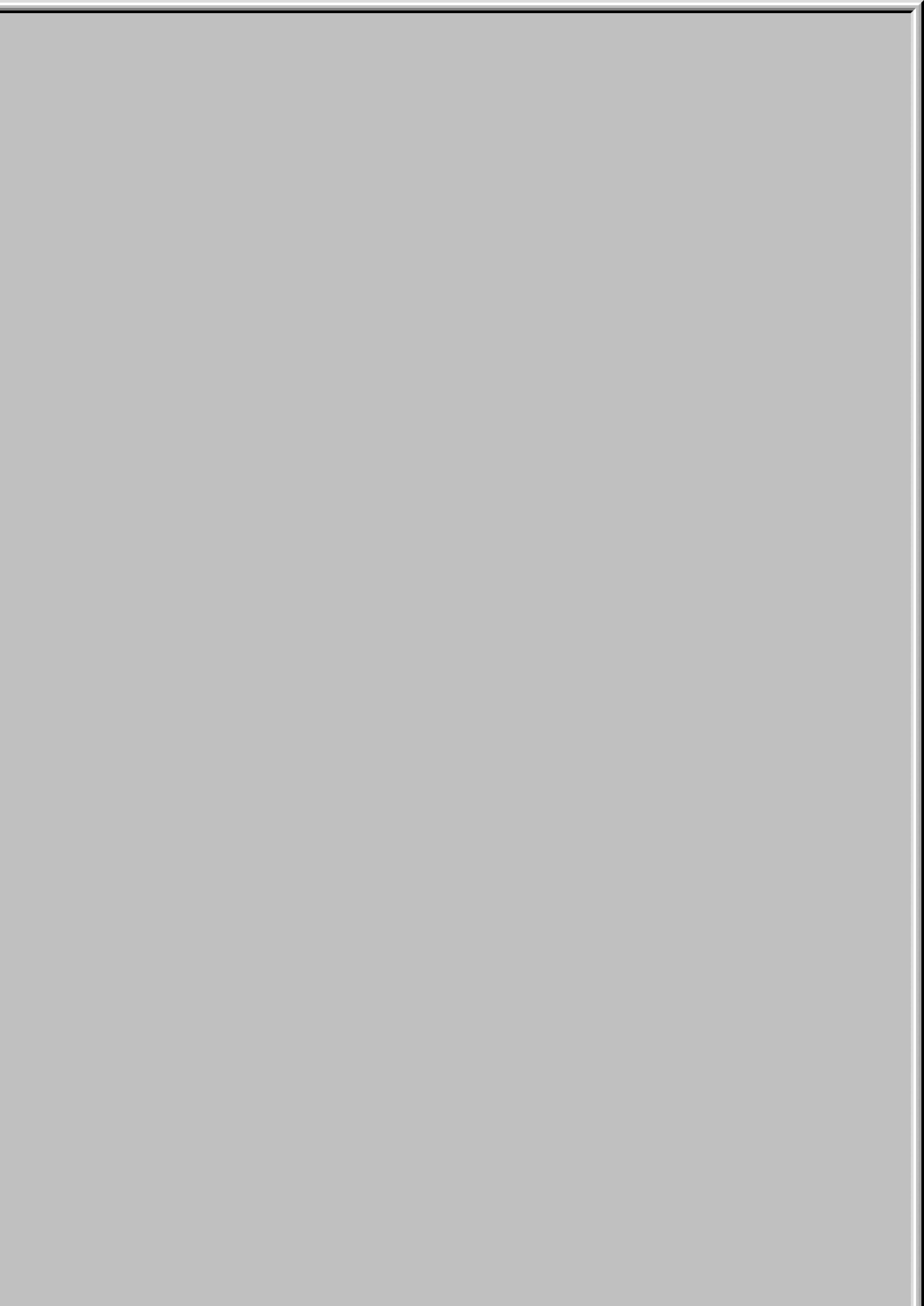
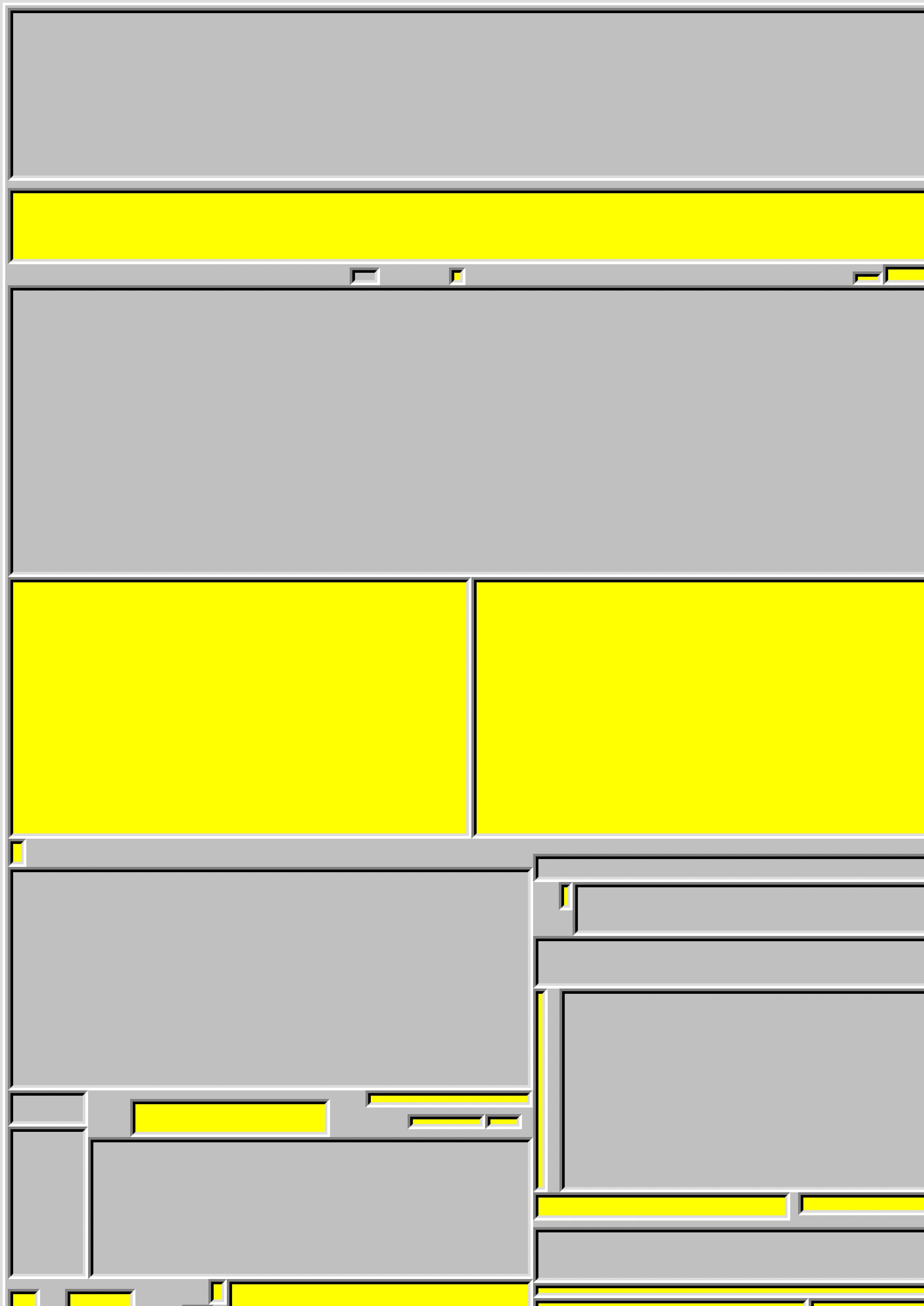

For this work, a real-time landscape simulator used in game development has been utilized to create a fragmented view of a storm-ridden and flood-battered landscape. Within games, generative landscapes are used instead of designed worlds, to create both the scale and the detail, but also the uniqueness of each game to be played. Minecraft had for instance a gameworld that was the size of the Earth when the game was introduced - they have since made it infinite.
With its unfathomable depth, this pure power within computer simulations has introduced a new habitat for the sublime. A Computer-generated landscape is infinite and extremely detailed, but is created and can be destroyed at the click of a button. This extreme fragility echoes our relationship with nature in the current discussions about climate change and ecological breakdown.

Performing a Landscape (Forest), 2020
4K video
30 min.
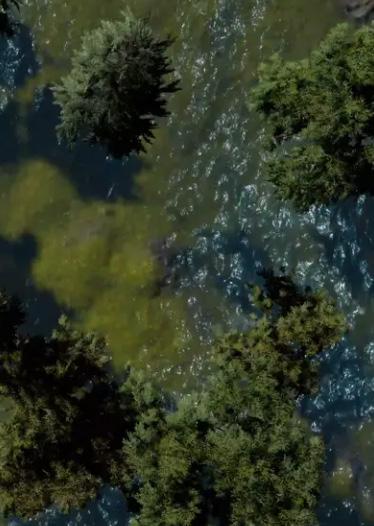

In Drop Shadow, Jan Robert Leegte uses facial recognition to evoke formal responses through mirroring. The technique of facial recognition is often used commercially to identify the user to collect data for advertisement purposes. In this work it is deployed to formally mirror you with an intangible object, namely an element of the standard interface. The interface has always been a battleground of expectation and response, and as such is also a mirroring medium. In this work, the drop shadow, an ornamental carrier of content, has been pushed forward to perform a ‘pas de deux’ with the user, resulting in an interactive sculpture that also alludes to the real-time presence of the interface surface and the deeper systems behind it. There is a real-time input and output of our mirroring, a reality usually hidden behind the pseudo-static appearance of the interface
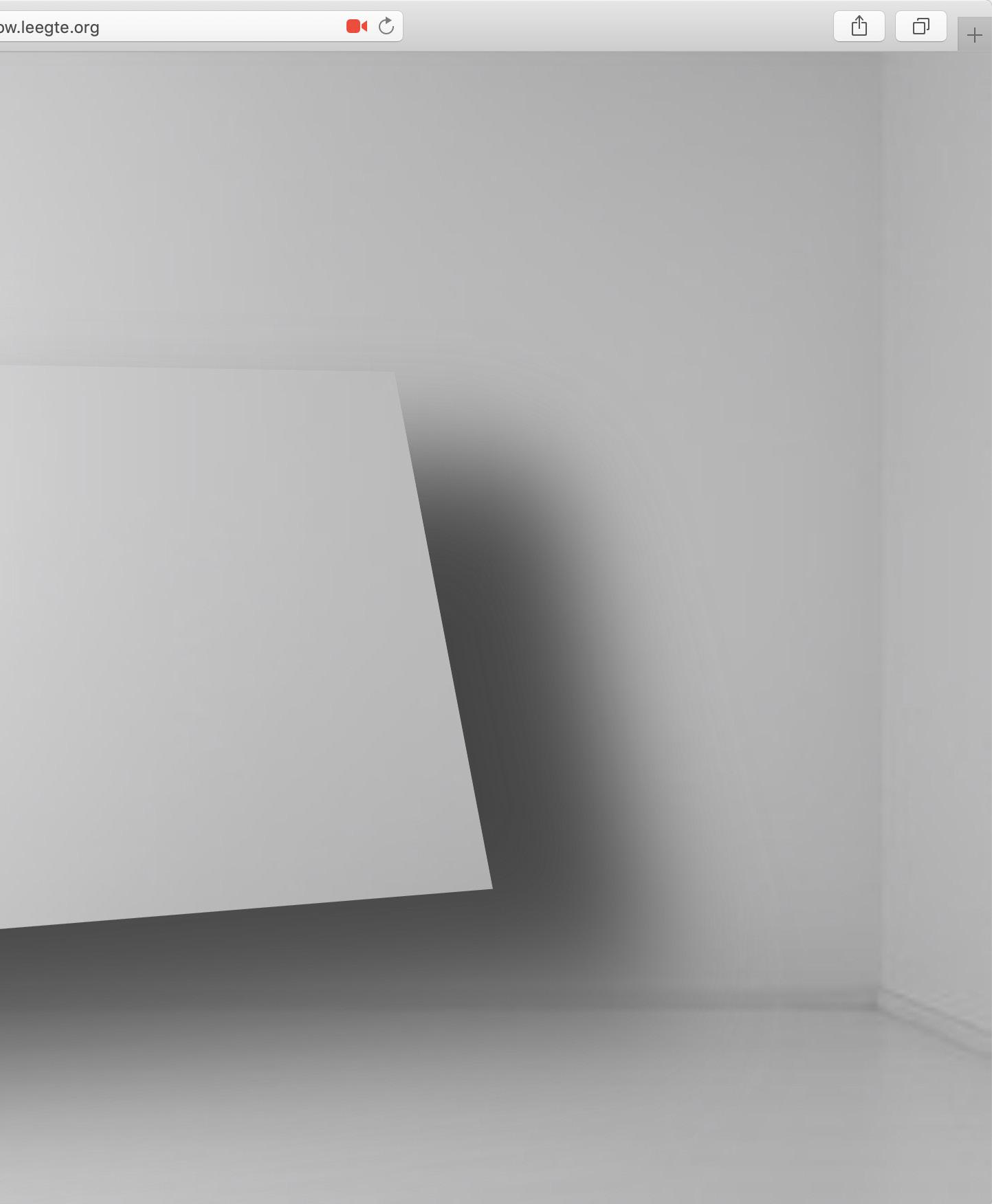
The Repositions works are investigations into the fundamental performative nature of software. Instead of taking the web document as a page to display static content; text, images, gifs, video, etc. the works have the document itself perform and can be read as document performances. Referencing to Bruce Nauman’s canonical “Wall-Floor Positions” from 1968, the works have the document take new positions in relation to the viewer and the browser’s window frame. Using random algorithms, the documents are infinitely striking new poses. The works have been executed in a series including a blank, blue, black and silver document.
Repositions (Black), 2018 website / https://www.repositionsblack.work/

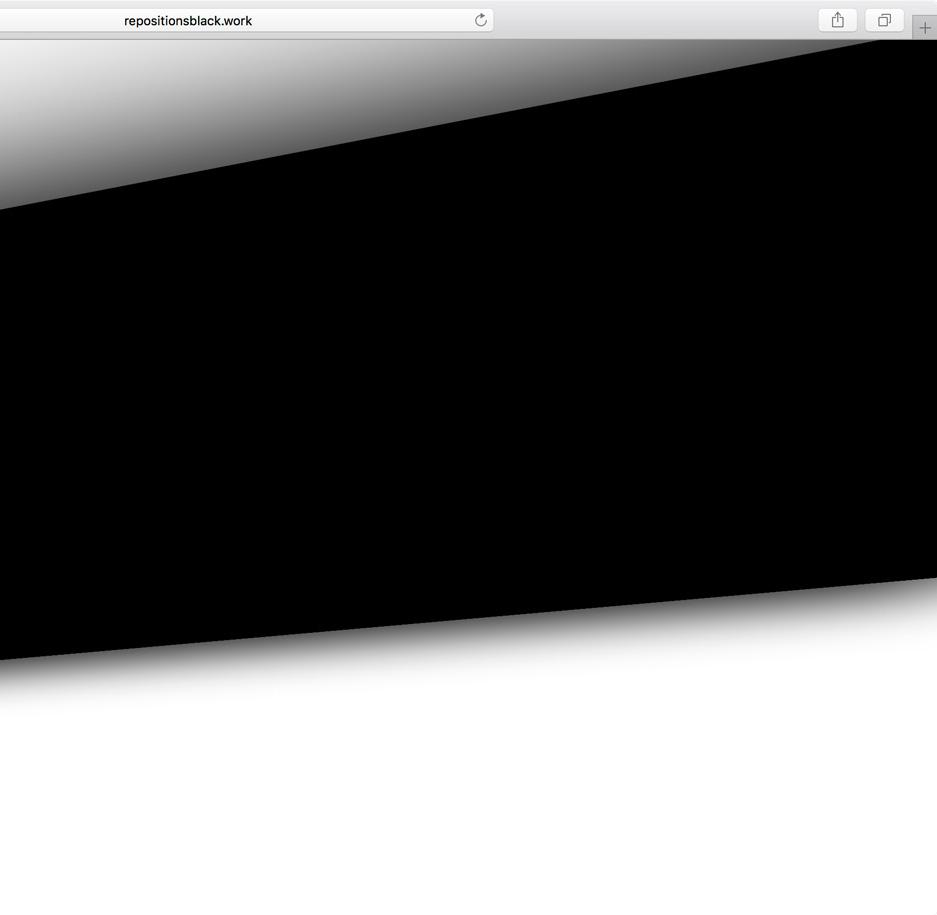


Repositions (2018) at Document Performance | Permanence (2023) Exhibition installation view at Panke Gallery
For Compressed Landscapes Leegte drew inspiration from the methods of 19th-century artists such as Vincent van Gogh and his contemporaries. With this series, Leegte attempts to breathe new life into 19th- century artists’ plein air painting: where the latter went outdoors to paint landscapes using brushes, Leegte applies algorithms to the wilderness of the Internet. These algorithms visit online photo databases such as Flickr, and randomly select images on the basis of search terms such as ‘mountains’, ‘forests’ or ‘sunset’. Once such images have been found, the algorithm compresses them into tiny files. The result of this computer process are digital impressionistic landscapes.
As the algorithm is constantly searching for images, the result is five ever-changing and therefore always unique Internet artworks of forests, sunsets, mountain sceneries, lunar skies and general landscapes.
Compressed Landscapes, 2016 HTML, Javascript, CSS, flickr API website https://compressedlandscapes.com/
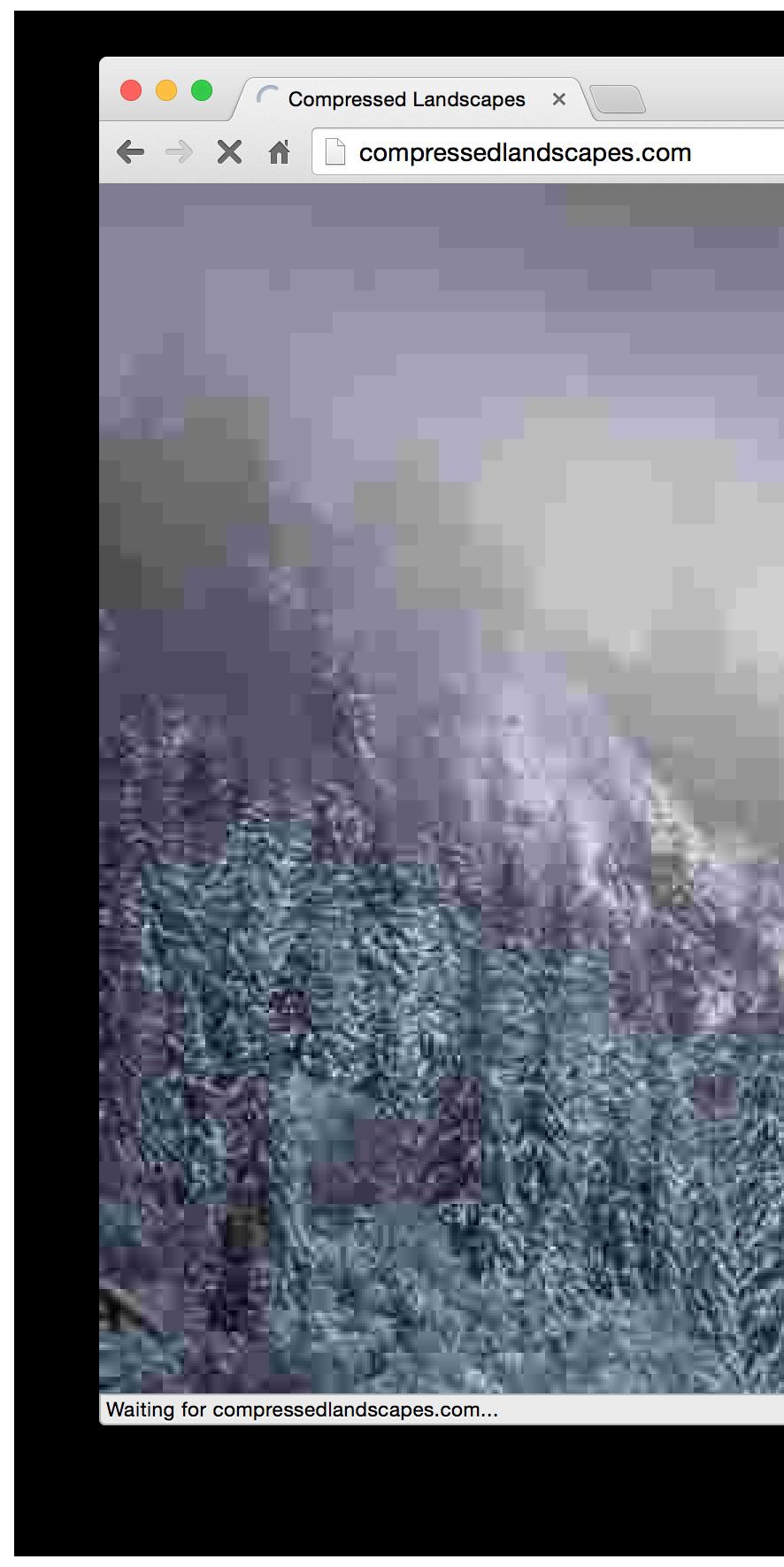

Leegte was challenged from the perspective of a sculptor by the new materiality that was provided by the Internet. By the continual and random alternation of black and white lines, his Ornament series displays an ever changing illusion of three-dimensionality, of light and shadow, and of sculptural materiality.
Each individual ornament exists both on-chain as a fized size SVG and off-chain as a web-based version that can be altered in its dimensions.
What is special about Ornament is that both of these are created deterministically based on the token hash of your NFT, which makes them identical. For the on- chain SVG, we rendered a 800 x 800 px image which looks best in OpenSea, etc. On a dedicated webpage (https://ornament.leegte.org/ornament?o=tokenid) you will be able to re-render your Ornament in any dimension you like, to use as desktop image, mobile phone background, a print at home, show on a screen on your wall, whatever you want. The url for your ornament will also be in the metadata or your NFT and can be found on OpenSea. In spite of all the variations you make, it will still remain the same ornament. Different, yet familiar Ornament.work, 2018 Website
